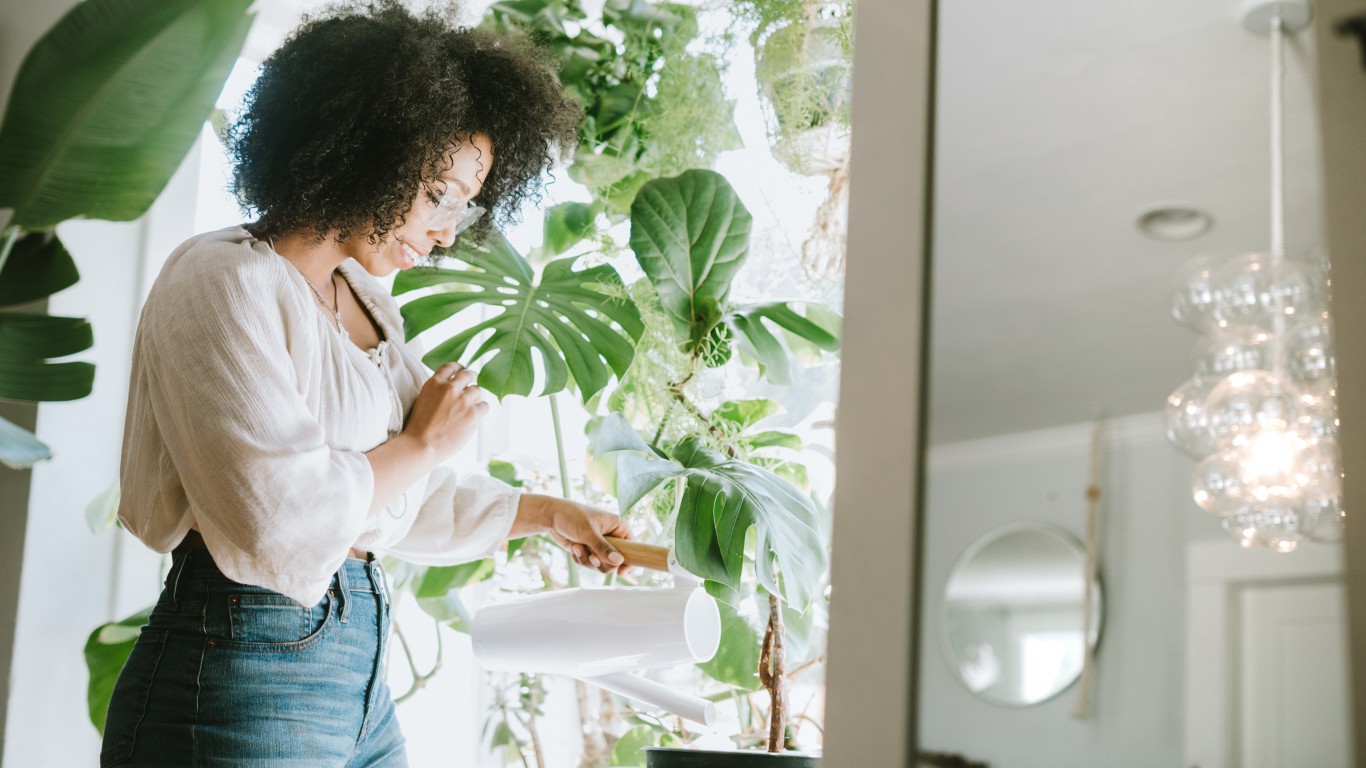
Perhaps you’re an aspiring indoor gardener – or one who’s tried to nurture houseplants but killed dozens in the past, despite your best efforts. In either case, don’t fear. Raising healthy, vibrant houseplants doesn’t have to be a mystery – and with the right plant, it may only require a few minutes of your time each month.
The key to successful indoor gardening is choosing a plant that can survive in the lighting conditions of your home, and then learning its watering requirements.
To compile a list of the 35 easiest houseplants to care for, 24/7 Tempo consulted numerous gardening sites and encyclopedia articles, paying particular attention to the basic lighting and watering needs of each plant.
Some plants require bright, direct sunlight for at least six to eight hours per day and will not thrive in a dark room no matter what. These plants will most likely need to be placed near a window with southern exposure. Other plants will suffer from direct sunlight, and should be kept away from windows. Once you’ve determined the lighting conditions of your home, you’re halfway there.
The next step is proper watering. Virtually no houseplant wants soggy roots, so be sure to pick a pot with drainage holes in the bottom. Additionally, the soil in the pot may hold too much moisture – which will cause a plant’s roots to rot – so pick the right soil for the plant. Succulents and other drought tolerant species will thrive in a sandy, cactus soil blend.
The key to watering any houseplant is to avoid overwatering. Pour in just enough water so that it begins to run out of the bottom of the pot. In general, plants either need consistent water (meaning never let the soil dry out), moderate water (meaning only water once the top inch of soil is dry), or are drought tolerant and prefer only to be watered once their soil is halfway or mostly dried out. If you tend to be forgetful, be sure to choose a drought tolerant variety.
Most indoor plants go through a dormant period in the winter, when they need much less water, so a good rule of thumb is to cut waterings in half in the cooler months. Other factors that can affect plant health are temperature and humidity. The plants we chose can generally thrive in average house temperatures and humidity.
Click here to see the 35 easiest houseplants to care for
Certain tropical plants that need very high humidity were eliminated from our list, as it can be difficult to maintain a humid environment indoors. (And we certainly don’t recommend that you try growing any of these – 35 of the weirdest plants on earth.)
We also eliminated air plants. Anyone who tells you that air plants are easy to care for is probably trying to sell you an air plant.
If you’re just beginning to raise houseplants, start slow, with one or two plants and learn their needs before acquiring more. Some plants can be toxic if ingested, so be sure to do research if you have a young child or a pet. (Here are the most common reasons people take their dog to the vet.)

Aloe
>Latin Name: Aloe vera
>Light Conditions: bright indirect light
>Watering Needs: drought tolerant
This attractive, spiky succulent – whose gel and latex are used to make a variety of topical medications – is popular for another reason: It’s incredibly resilient and low-maintenance. It can grow for years in the same container without needing repotting, and prefers to dry out between scant waterings.
[in-text-ad]
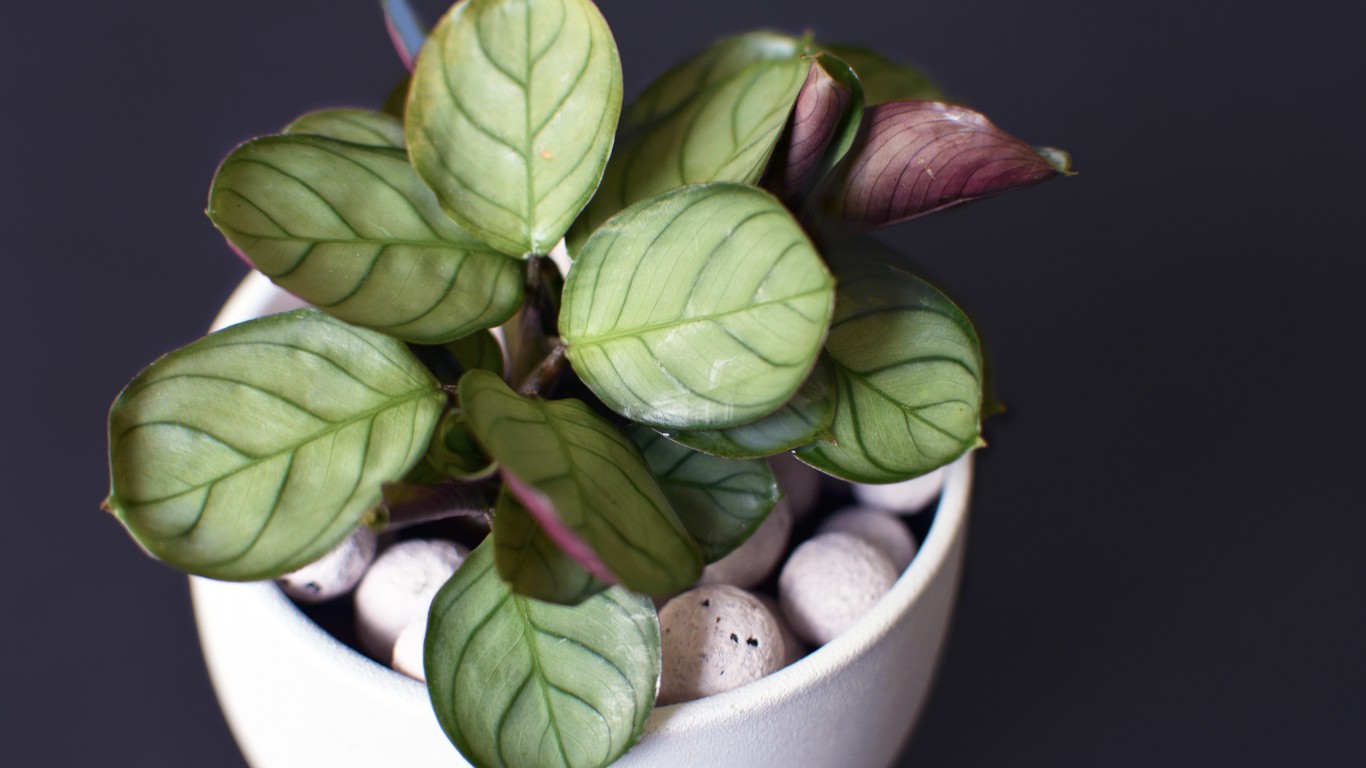
Amagris
>Latin Name: Ctenanthe burle-marxii ‘Amagris’
>Light Conditions: medium to bright indirect light
>Watering Needs: moderate
The Amagris variety of the fishbone prayer plant is not to be confused with the prayer plant (Maranta leuconeura), which is a complicated beauty that needs attentive care and high humidity. Amagris is a great substitute, as its delicate herringbone stripes and purple undersides are a handsome addition to any collection, and it can handle most lighting situations. Its leaves will indicate when it is getting too dry, as they curl slightly inward.
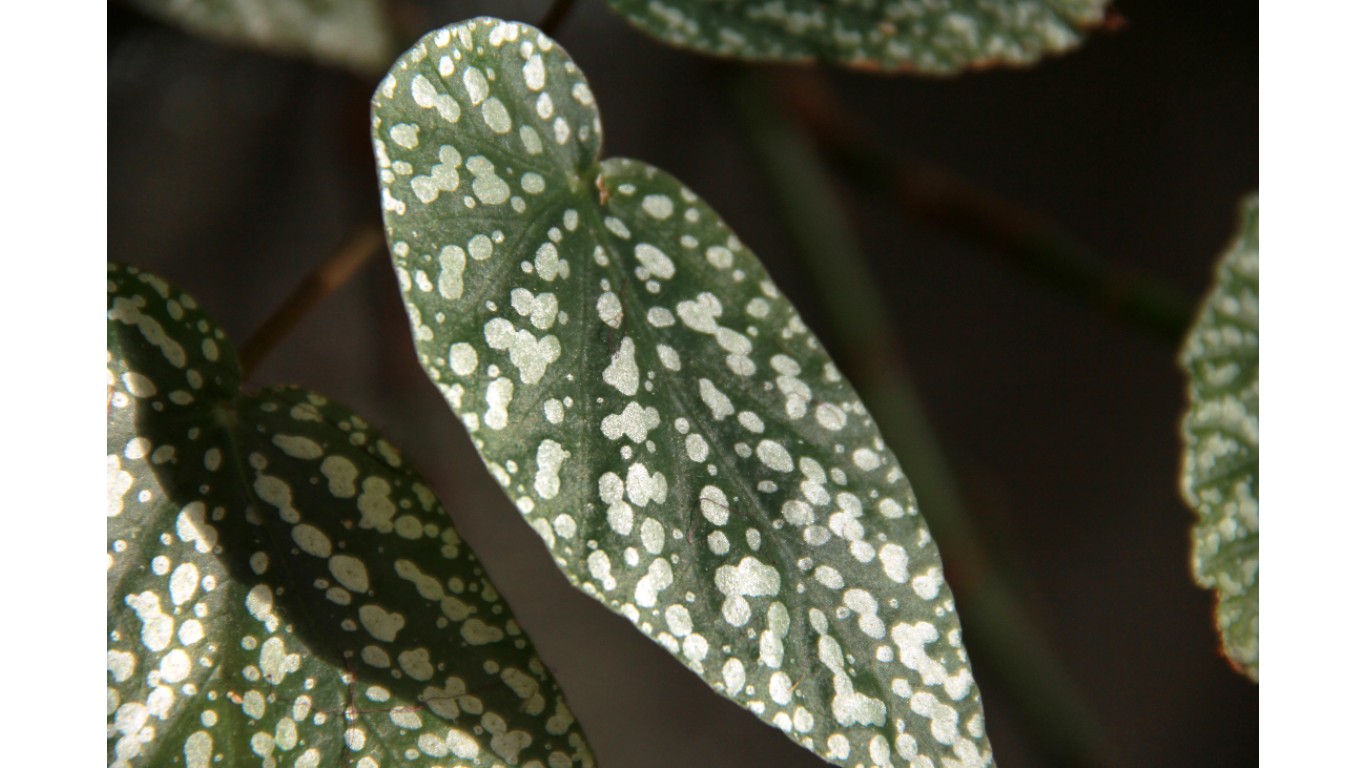
Angel wing begonia
>Latin Name: Begonia x coralline
>Light Conditions: low to bright indirect light
>Watering Needs: consistent
The most upright of the indoor begonias, angel wings are robust growers and can thrive without the high humidity needed by Rex begonias. Because of their vigorous cane growth – which can reach six feet tall in some varieties – they may require consistent pruning or stabilization.
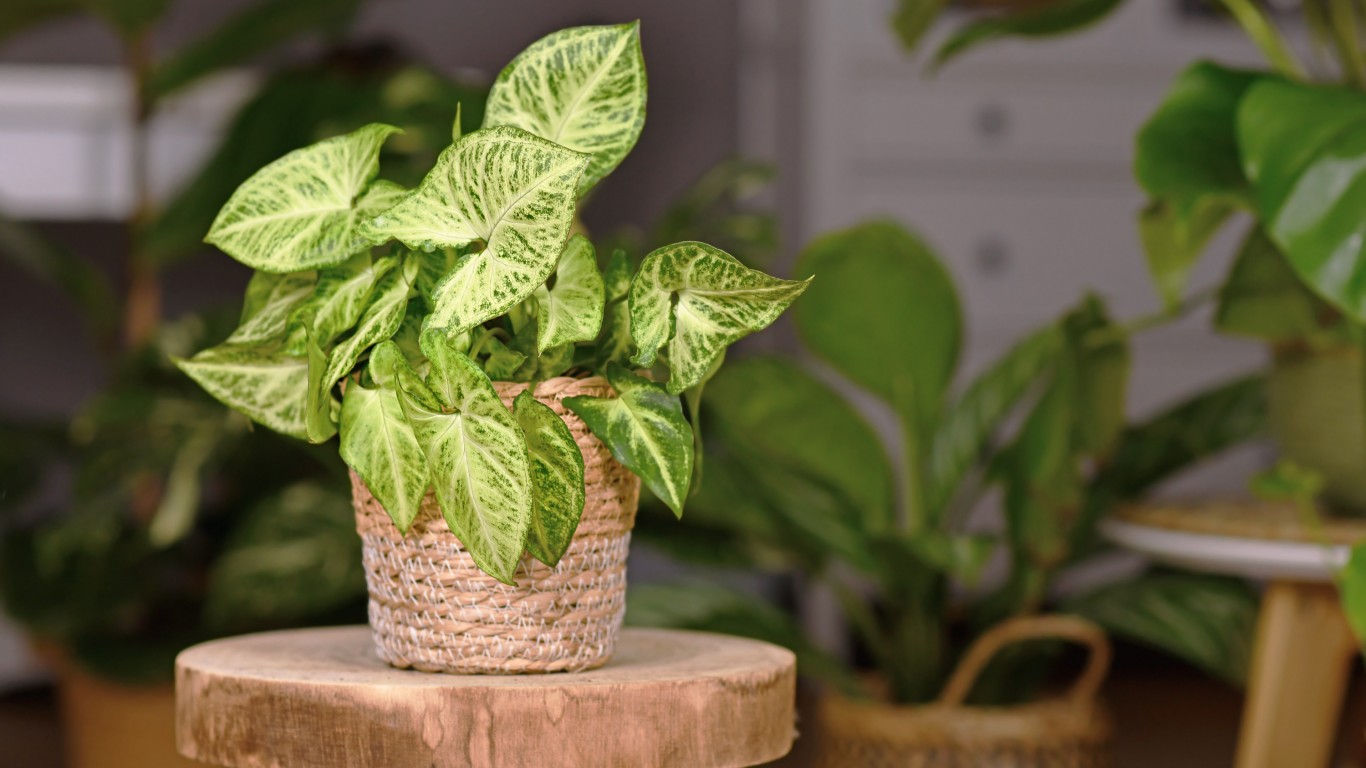
Arrowhead vine
>Latin Name: Syngonium podophyllum
>Light Conditions: low to medium light
>Watering Needs: consistent
Arrowhead vines are notable for their tolerance of low lighting conditions, and can even thrive in artificial light. Their intricately variegated, arrow-shaped leaves will retain their color no matter how little light they get; just don’t place them in direct sunlight.
[in-text-ad-2]
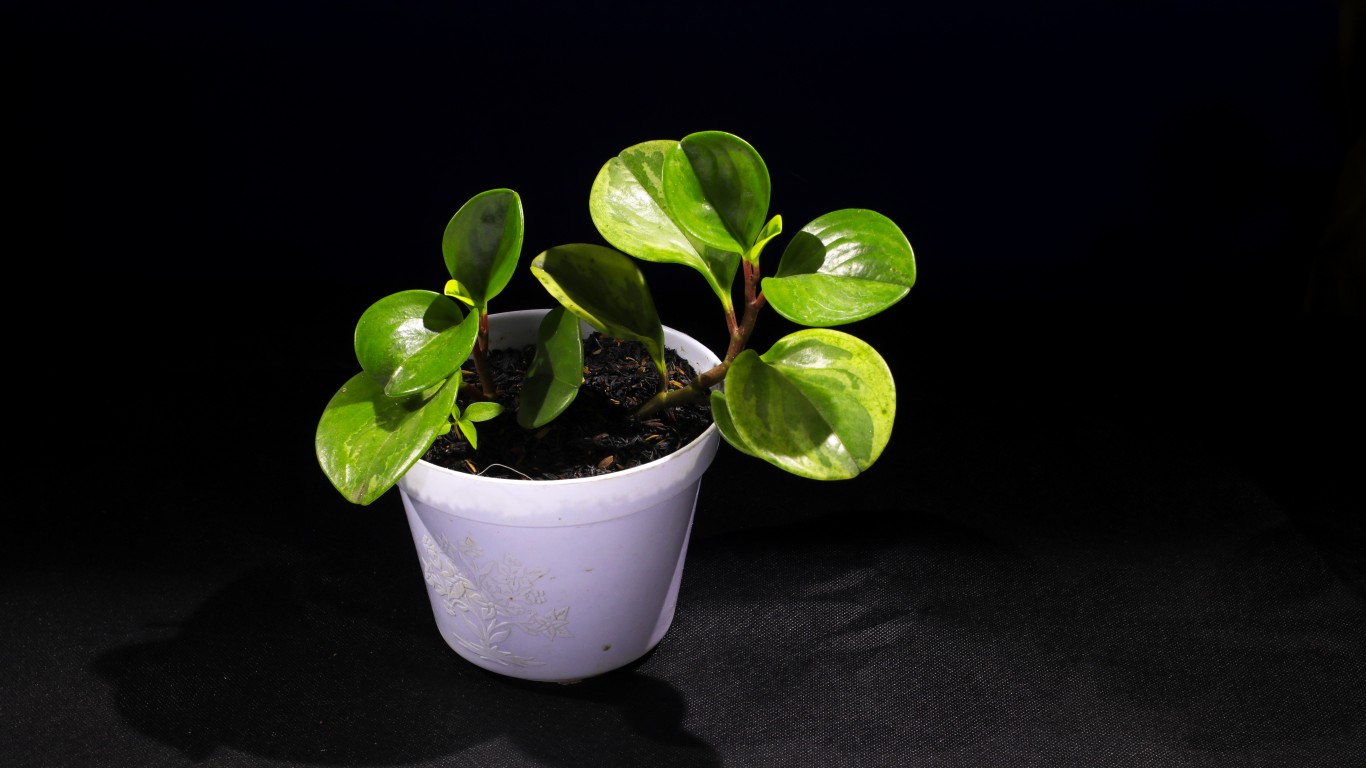
Baby rubber plant
>Latin Name: Peperomia obtusifolia
>Light Conditions: low to bright indirect light
>Watering Needs: moderate/drought tolerant
There are a wide variety of colorful and attractive houseplants in the Peperomia genus. The baby rubber plant is one of the easiest Peperomias to care for, as this succulent variety stores water in its glossy leaves, making it relatively drought tolerant. Native to tropical areas as an understory plant, it can handle low lighting conditions.
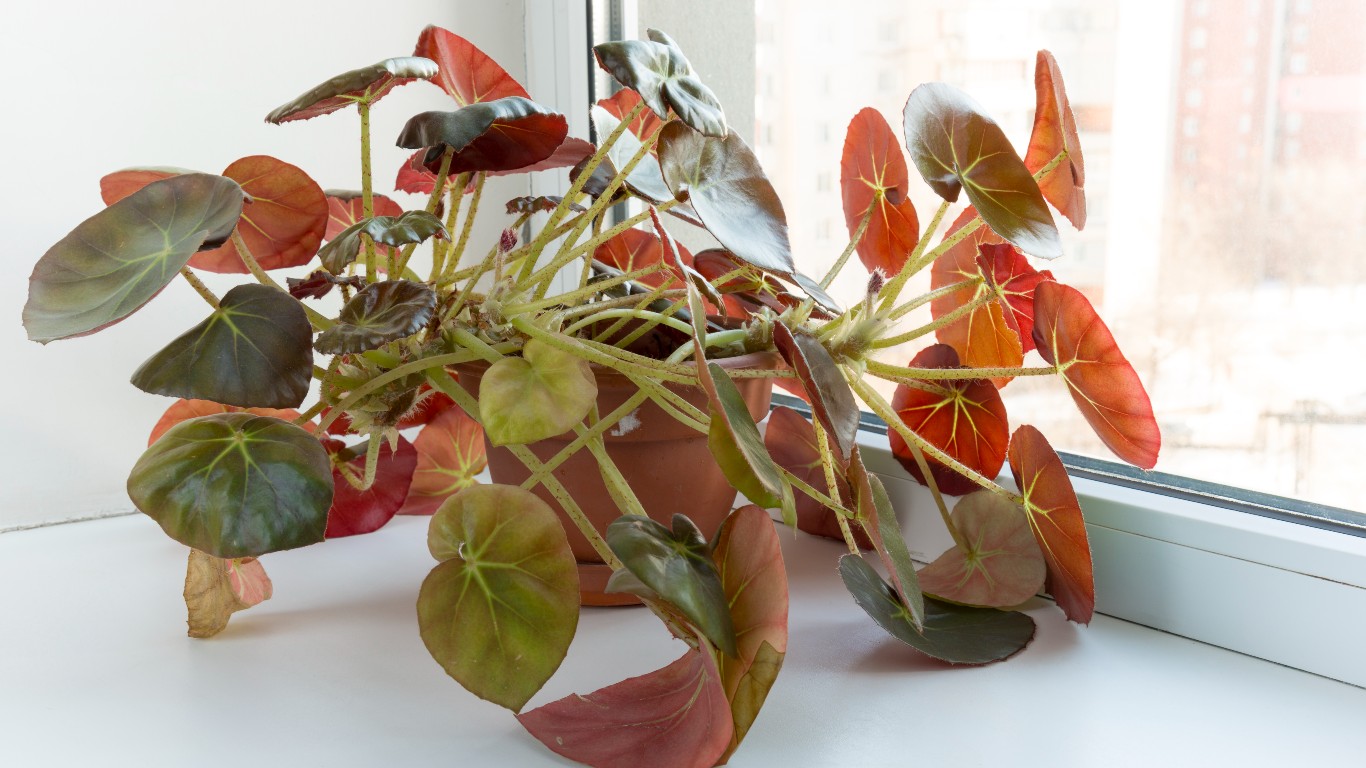
Beefsteak begonia
>Latin Name: Begonia erythrophylla
>Light Conditions: medium to bright indirect light
>Watering Needs: consistent
The easiest of all indoor begonias, this wax variety has shiny, dark green leaves with contrasting veins and iridescent burgundy undersides. Beefsteaks grow quickly and heartily in the right conditions. They are simple to propagate and a smart choice for novice indoor gardeners, as they are hard to kill. Fans of frequent watering and humidity, their leaves will start to droop if they’re drying out, but will bounce back up after being watered.
[in-text-ad]
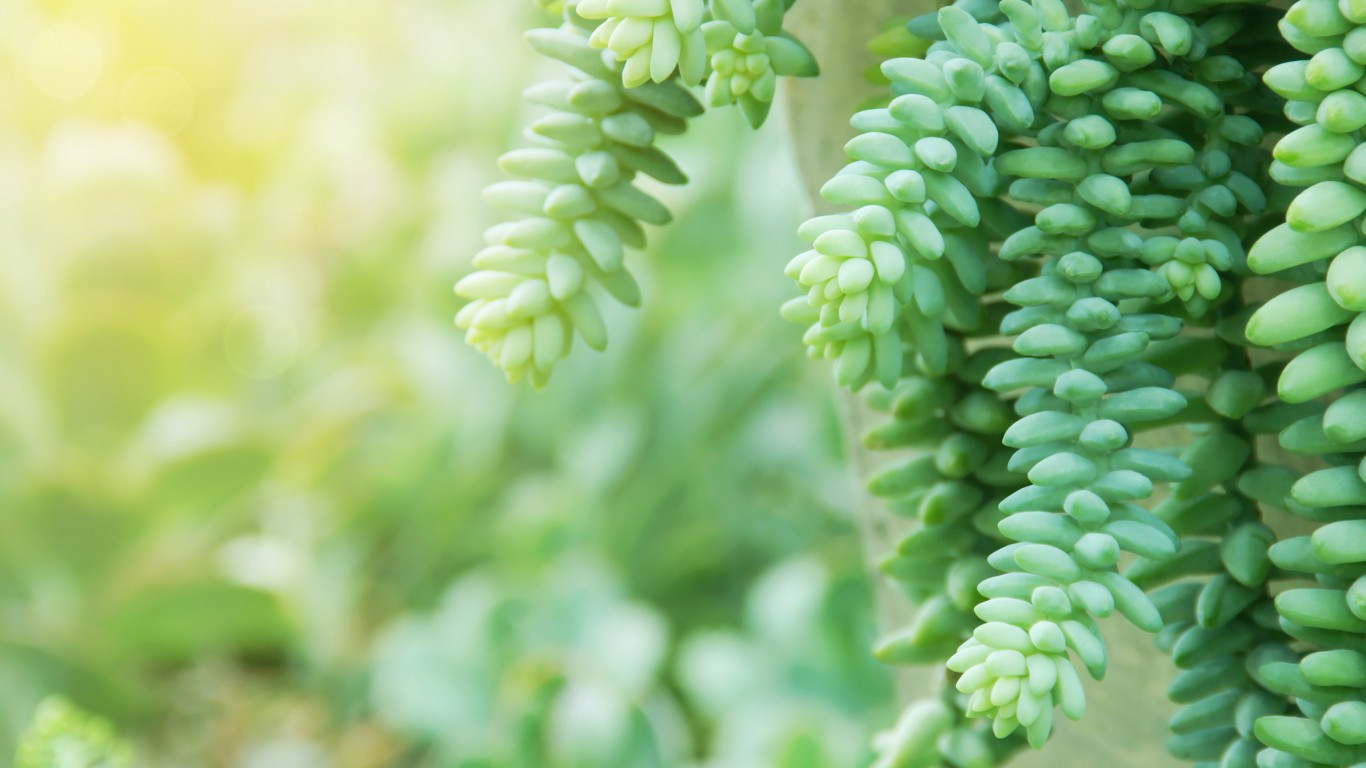
Burro’s tail
>Latin Name: Sedum morganianum
>Light Conditions: medium to bright light
>Watering Needs: drought tolerant
This trailing succulent loves bright direct light and is a top choice for hanging window baskets and high shelves, where its branches can drape down freely and out of the way. The key to a successful burro’s tail is to handle it as little as possible, as its leaves have a tendency to fall when jostled.
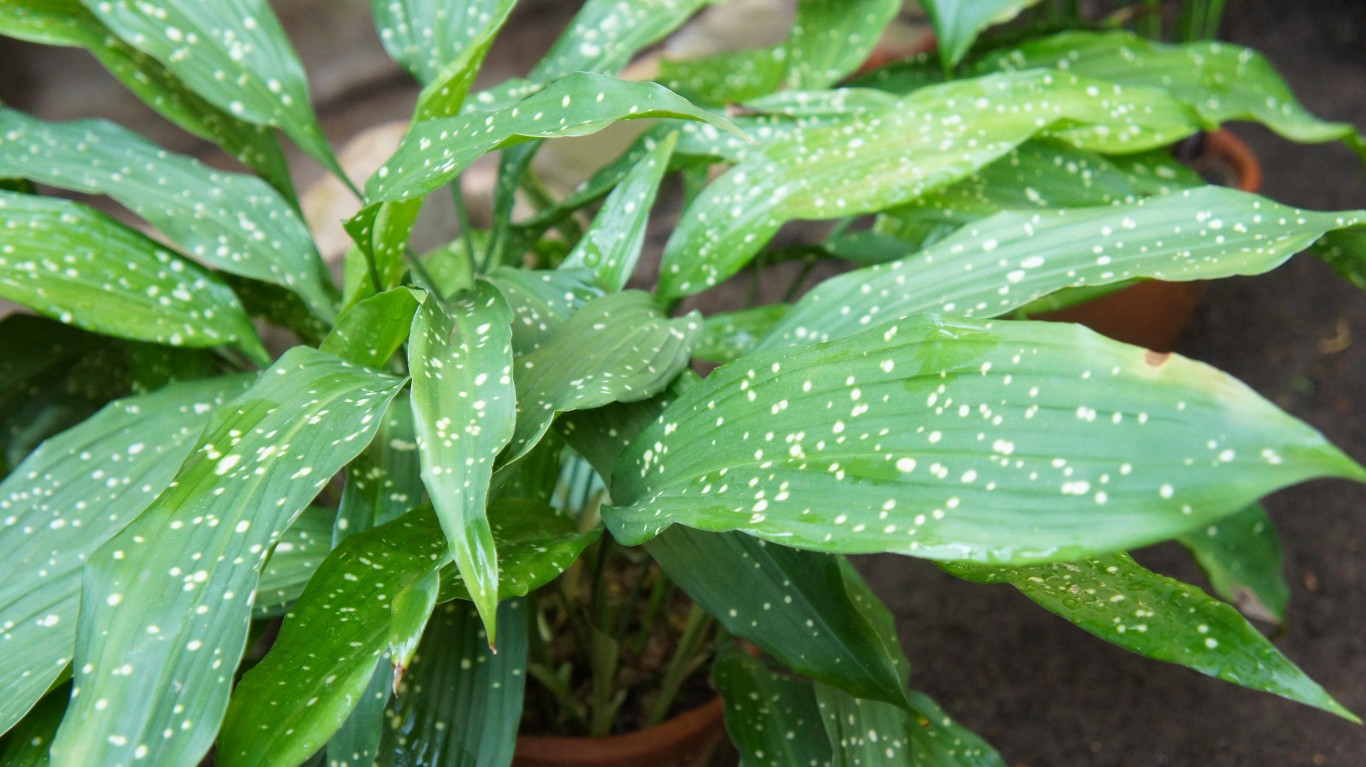
Cast iron plant
>Latin Name: Aspidistra elatior
>Light Conditions: low light
>Watering Needs: moderate
This nearly indestructible plant can handle low light, low humidity, and temperatures down to 50 degrees, which makes it great for offices as well as dark corners. It prefers to be underwatered rather than overwatered, and its green leaves stay deeply colored as long as it is never placed in direct sunlight. Although the cast iron plant can reach one to two feet high, it is a slow grower, so start with a large plant rather than a cutting.
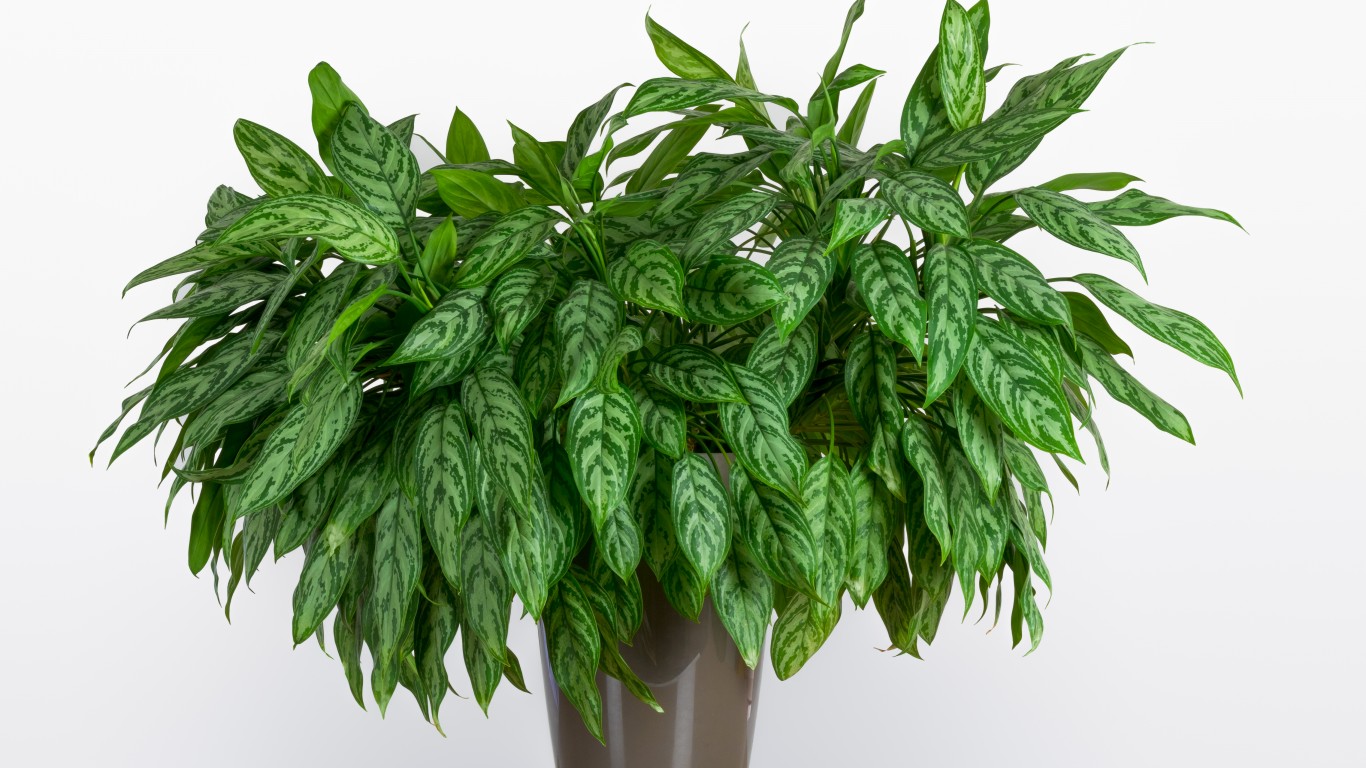
Chinese evergreen
>Latin Name: Aglaonema commutatum
>Light Conditions: low to medium light
>Watering Needs: moderate
The deeply variegated, lance-shaped leaves of the Chinese evergreen can range from dark green to seafoam to frosty silver. These hardy plants will tolerate low light, low humidity, and drought, although higher temperatures and humidity will keep them happier. When they become overgrown, trimmed leaves can be easily rooted in water to start new plants.
[in-text-ad-2]
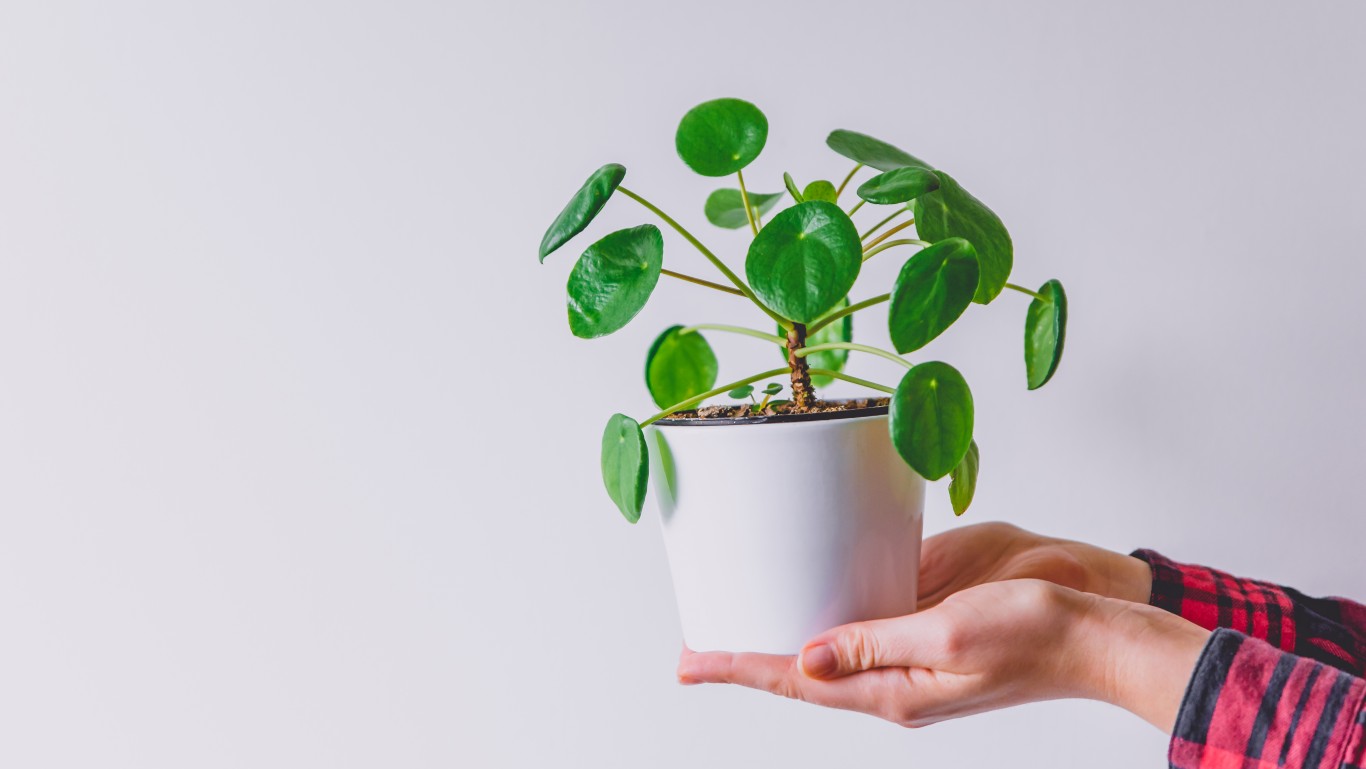
Chinese money plant
>Latin Name: Pilea Peperomioides
>Light Conditions: low to bright indirect light
>Watering Needs: moderate
This compact cutie is native to southern China and grows along the foothills of the Himalayas, but has been popular in Scandinavia since it was brought there by a missionary. It prefers indirect light and weekly waterings with time to dry out in between. This Pilea often produces shoots which are easy to cut off and root in water or soil to start new plants.
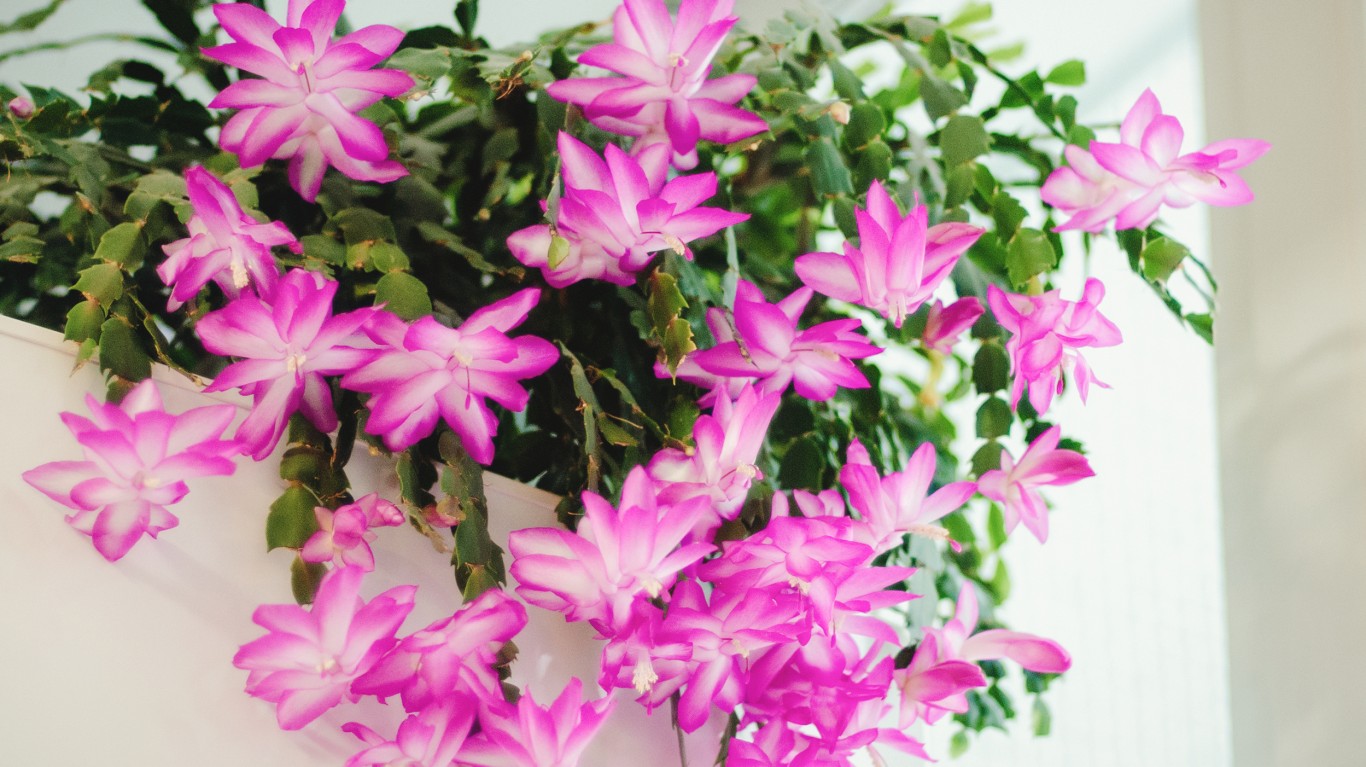
Christmas cactus
>Latin Name: Schlumbergera x buckleyi
>Light Conditions: medium to bright indirect light
>Watering Needs: drought tolerant
This tropical cactus is known for flowering in December, with blooms that can come in shades of white, peach, fuschia, red, or purple, depending on the variety. It makes a great hanging basket or windowsill plant, where its long branches have room to drape. While Christmas cacti need more consistent watering than desert cacti, they still prefer for their soil to dry out between waterings.
[in-text-ad]
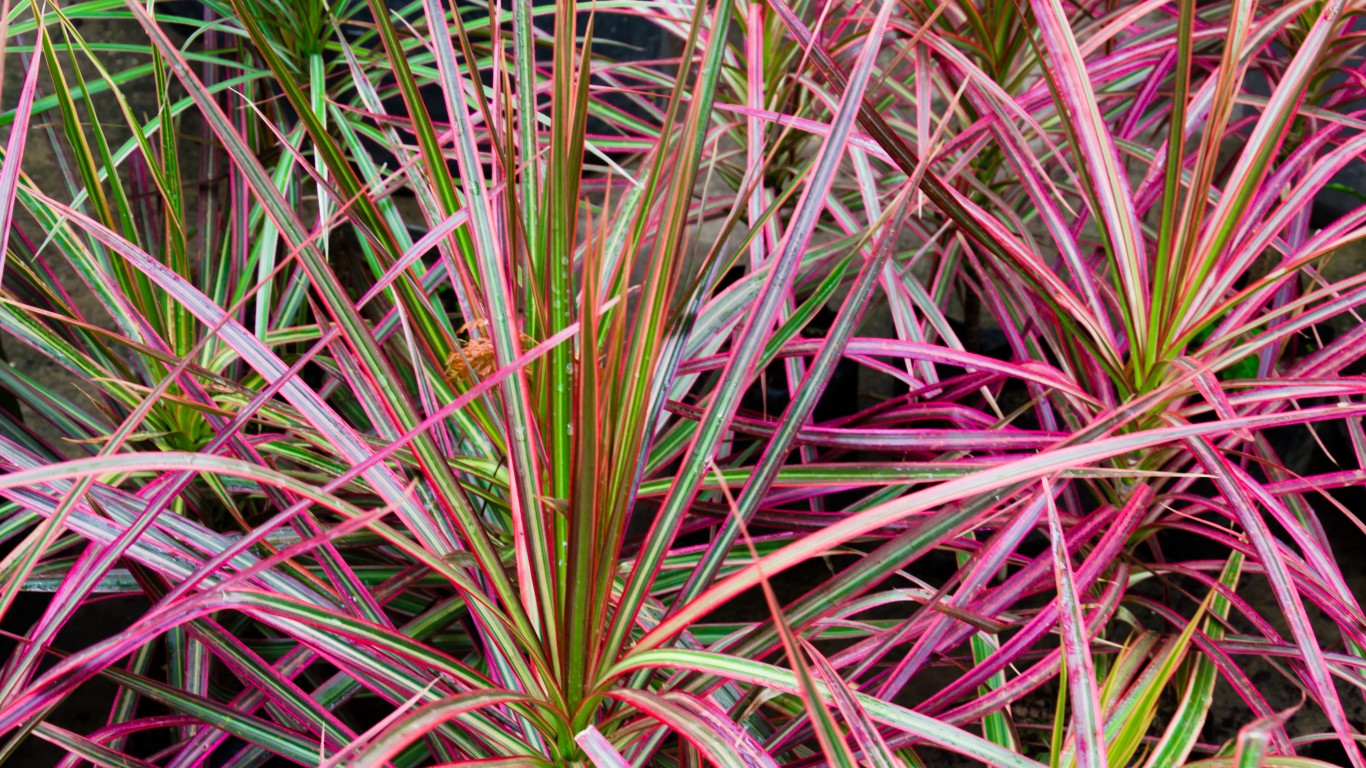
Dragon tree
>Latin Name: Dracaena marginata
>Light Conditions: medium to bright indirect light
>Watering Needs: drought tolerant
With tall, skinny trunks and leaves edged in red, dragon trees are ideal for adding interest and depth to plant arrangements. They also stand alone well in corners and behind sofas, as they can reach a height of as much as seven feet. Low maintenance and drought tolerant, dragon trees don’t require regular fertilization. They do prefer warm, humid environments but can survive in a variety of settings.
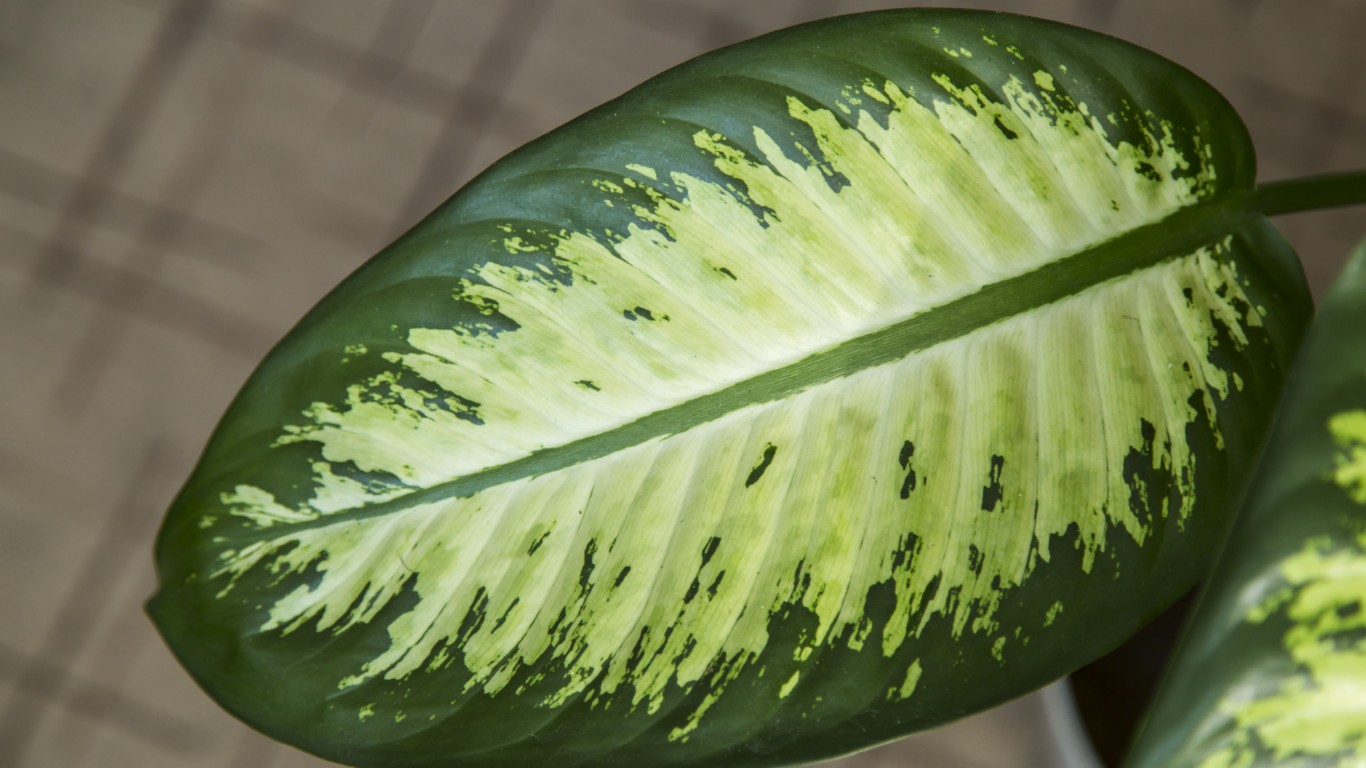
Dumbcane
>Latin Name: Dieffenbachia amoena
>Light Conditions: low to medium light
>Watering Needs: consistent
This lush, tropical houseplant can grow from one to six feet high and can handle lower light and artificial light conditions. It gets its name from its poisonous sap, which can cause tongue swelling and temporary speechlessness if ingested. Dumbcane likes consistently wet, but not soggy, soil.
English ivy
>Latin Name: Hedera helix
>Light Conditions: medium to bright light
>Watering Needs: consistent
The key to growing this trailing vine is simply light. Ivy needs medium or bright light to thrive, and to keep its leaves bright and vibrant. It is perfect for sunny window sills and hanging baskets, and its long tendrils can be trained around windows or pruned to maintain a bushier shape.
[in-text-ad-2]
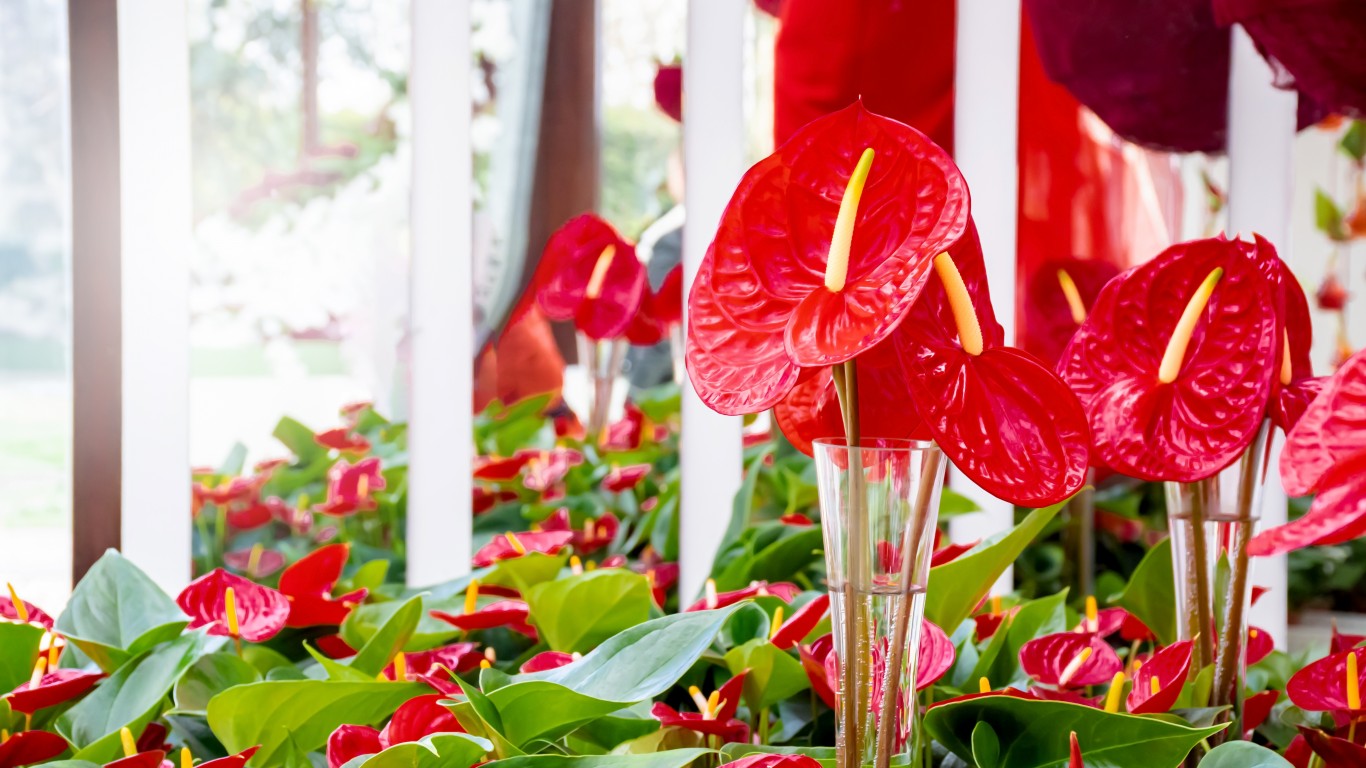
Flamingo flower
>Latin Name: Anthurium andraeanum
>Light Conditions: medium to bright indirect light
>Watering Needs: moderate
Also known as laceleaf or painter’s palette, the flamingo flower plant has extremely long lasting red flowers, while hybrid varieties can bear blooms in pink, white, purple, and green. A great air purifier, this plant is known to remove ammonia and formaldehyde from indoor spaces.
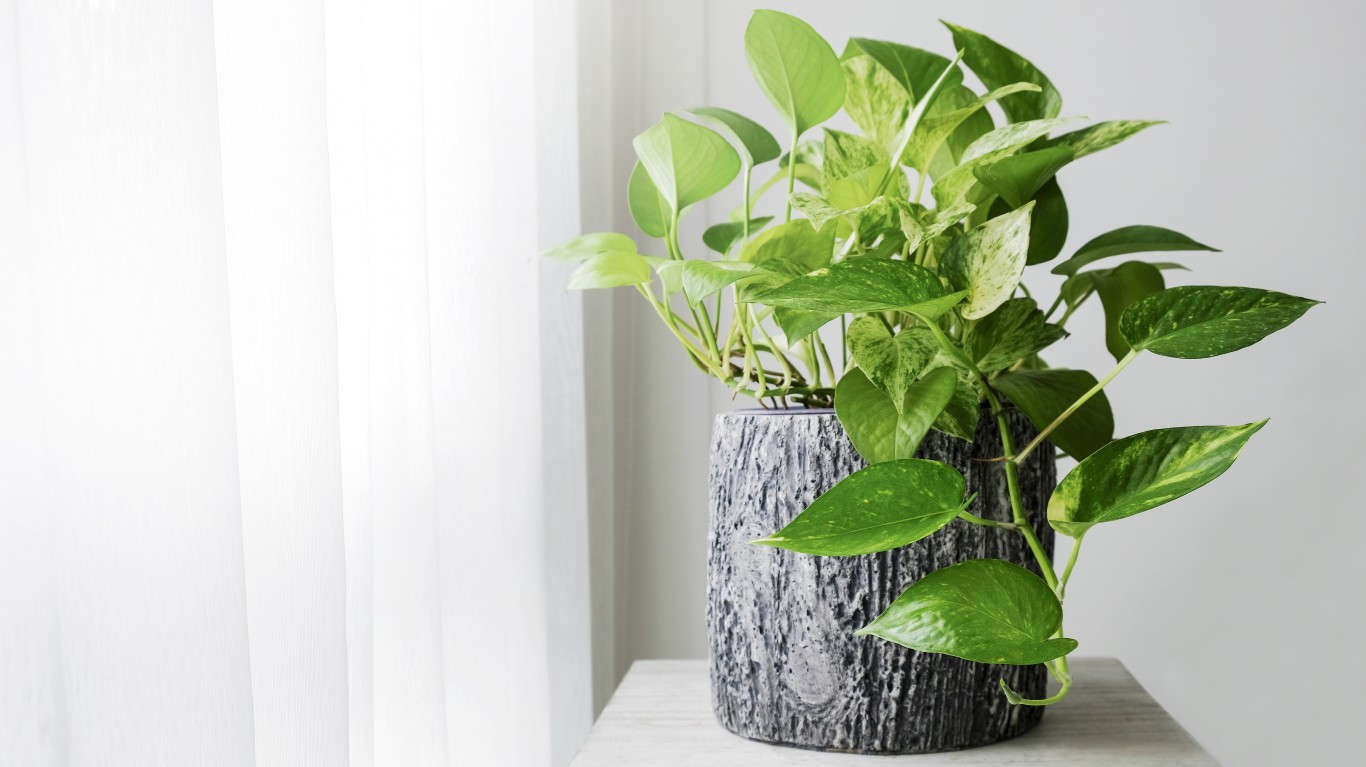
Golden pothos
>Latin Name: Epipremnum aureum
>Light Conditions: any light
>Watering Needs: moderate/drought tolerant
Nearly impossible to kill, golden pothos, or Devil’s ivy, can survive in extremely low light conditions and is drought tolerant. It will, however, thrive with more frequent waterings and will drop its oldest leaves if underwatered. A quick-growing vine, pothos is ideal for training over doorways or along bookshelves.
[in-text-ad]
Heartleaf philodendron
>Latin Name: Philodendron hederaceum
>Light Conditions: low to bright indirect light
>Watering Needs: moderate
This low maintenance vining plant adapts well to low light conditions and loves humidity, making it a great choice for bathrooms. The more indirect light it receives, however, the faster it will grow. It can be trained to climb up a trellis or allowed to cascade down over shelves or from hanging baskets.
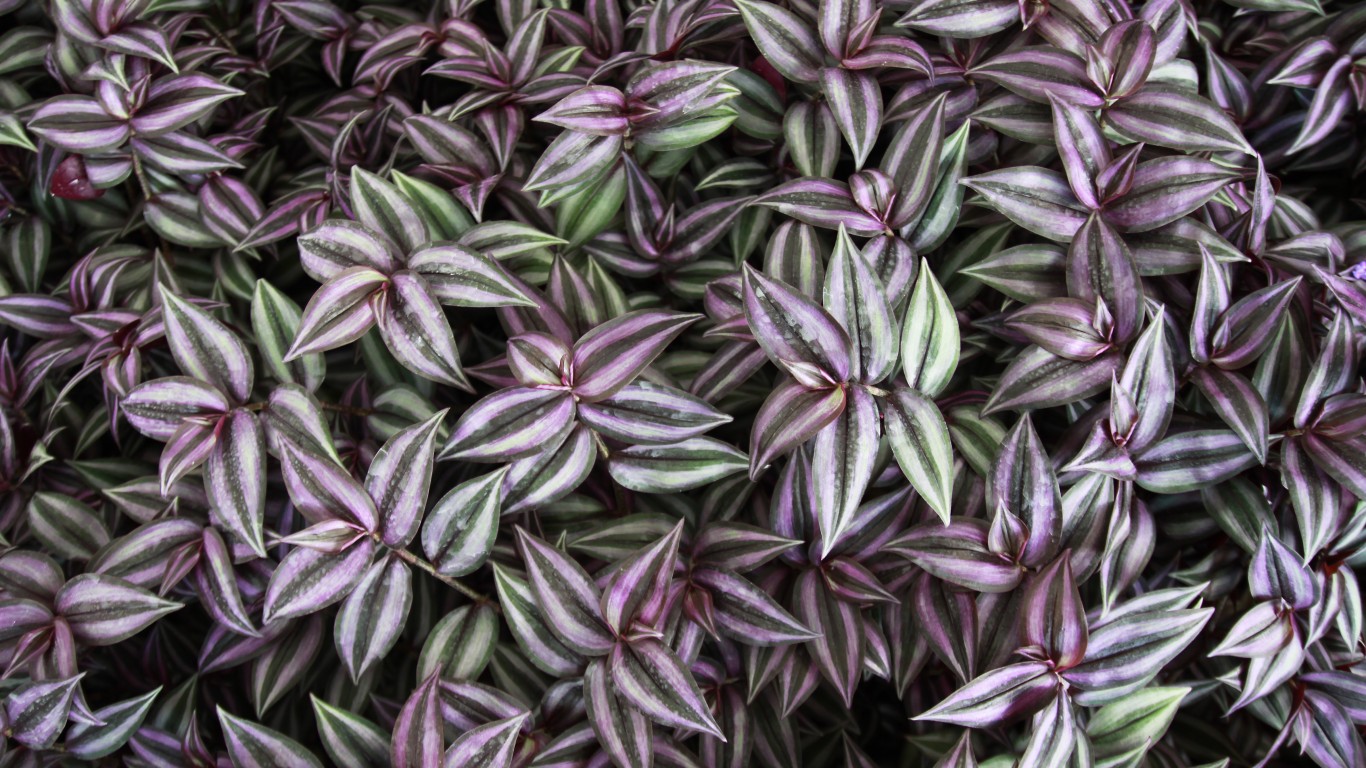
Inch plant
>Latin Name: Tradescantia zebrina
>Light Conditions: medium to bright light
>Watering Needs: moderate
Also known as spiderwort, this vigorous vining plant has silver and green variegated leaves with deep purple undersides. Well suited for windows, spiderwort needs bright light to maintain its color, and moderate watering to stay full and bushy. When treated right, it will grow quickly and need occasional pruning. Luckily, the cuttings root easily in water and are perfect for sharing with friends.
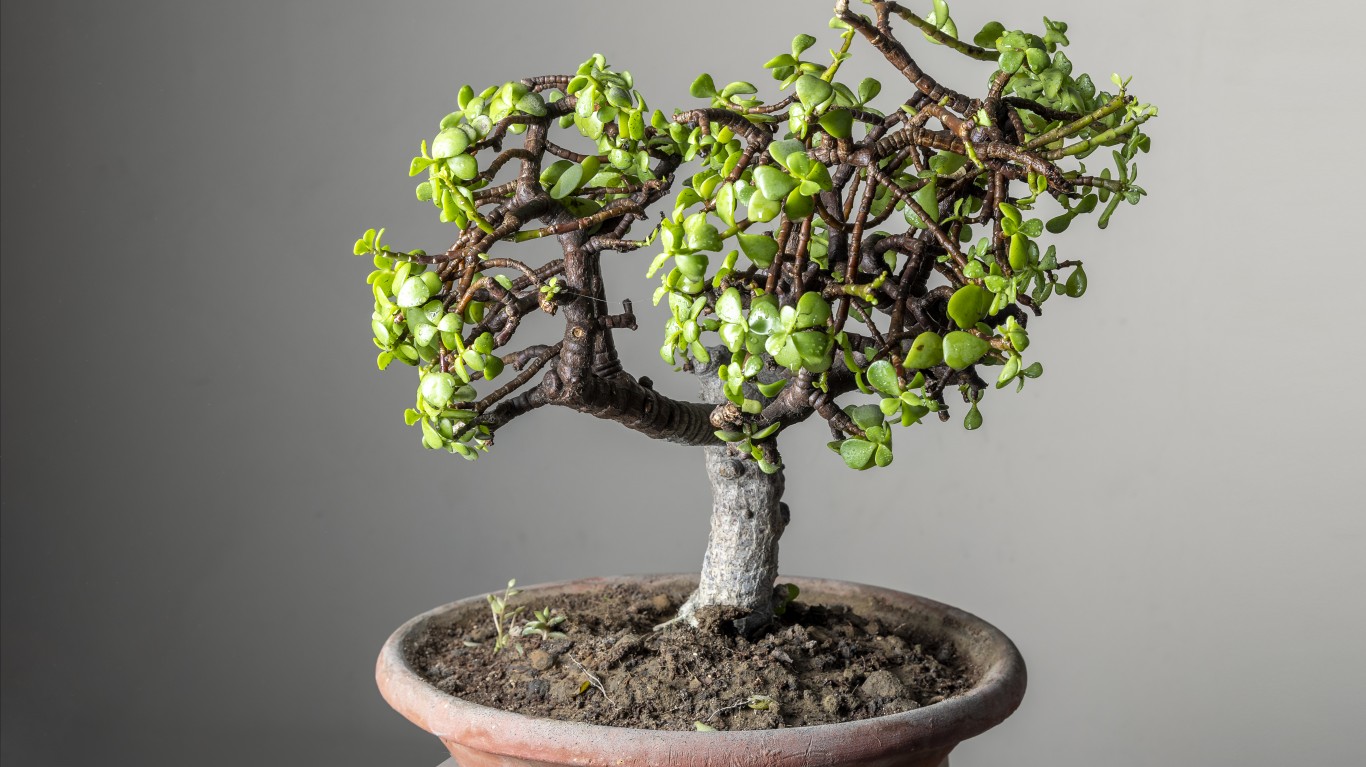
Jade plant
>Latin Name: Crassula ovata
>Light Conditions: medium to bright light
>Watering Needs: moderate
Popular for their ease of care, jade plants need only a sunny room and the right amount of water to stay happy. While soggy soil will rot their roots, extended dry conditions will harm the leaves. Allow their soil to dry out about halfway before rewatering, and they will stay plump and verdant.
[in-text-ad-2]
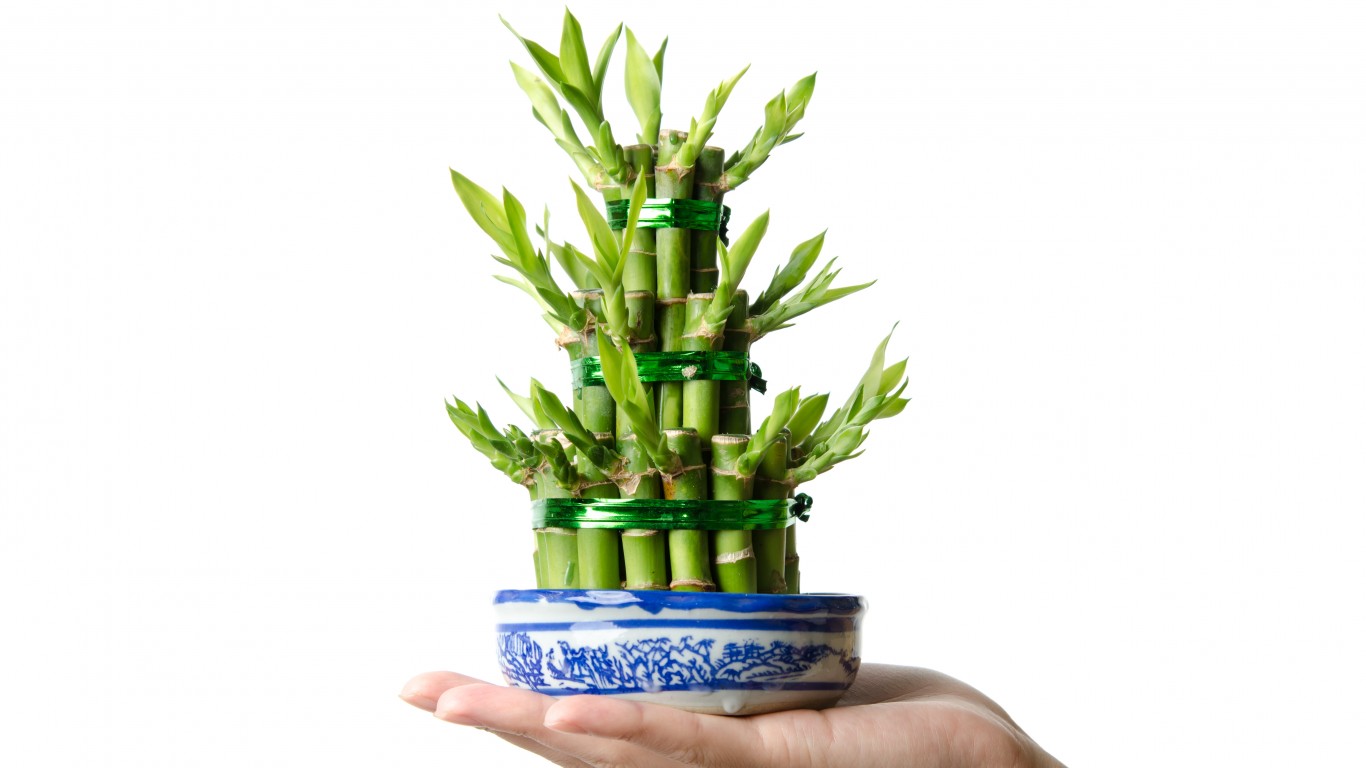
Lucky bamboo
>Latin Name: Dracaena sanderiana
>Light Conditions: medium to bright indirect light
>Watering Needs: consistent
Not actually related to bamboo, this cane plant, native to Africa, is in the asparagus family. It can grow in water without soil and is commonly grown in clear glass containers with or without pebbles in the bottom. Use filtered or distilled water to keep the leaves from browning, and clean the container once a week, refilling it with fresh water to keep algae at bay.
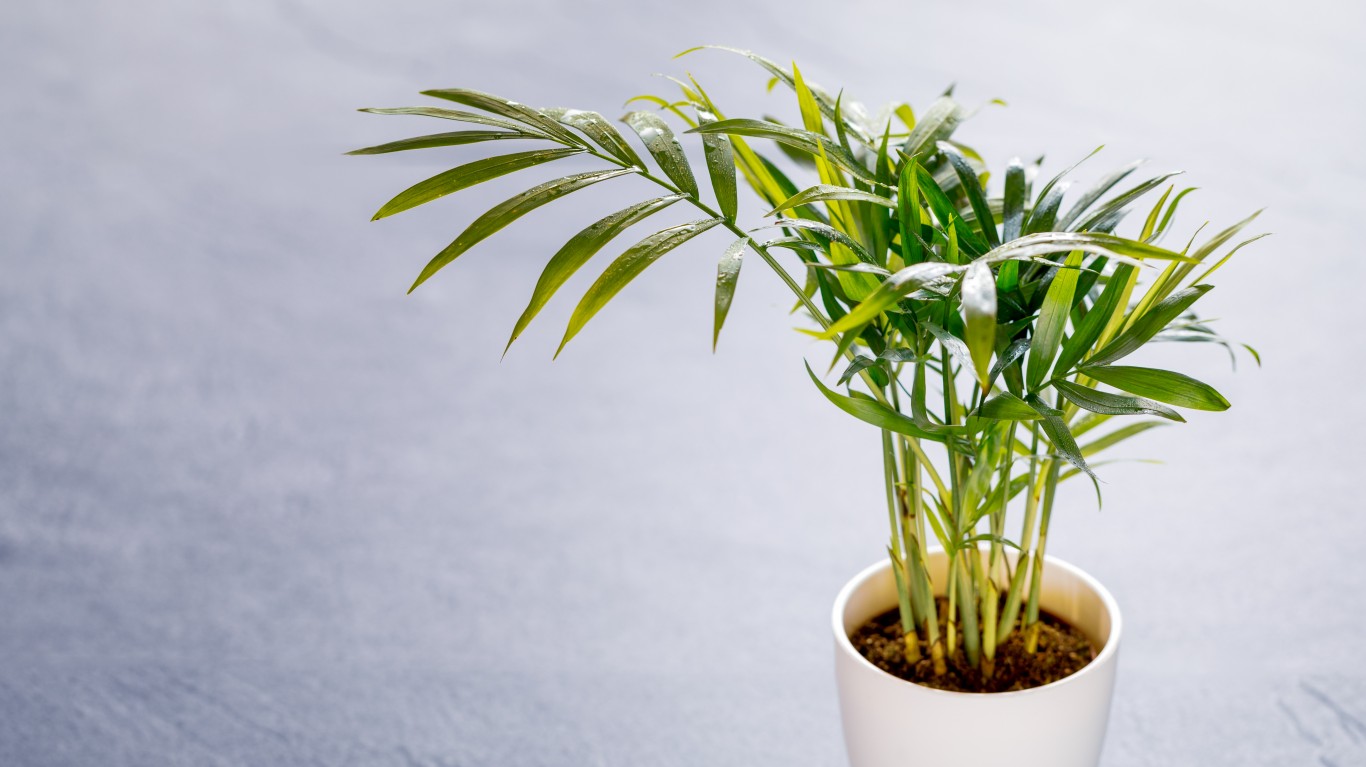
Parlor palm
>Latin Name: Chamaedorea elegans
>Light Conditions: low to medium light
>Watering Needs: moderate
This popular, stand-alone house plant has been cultivated since the Victorian era. It thrives in indirect light and is able to survive in lower light conditions than most palms. Parlor palms only need repotting every two to three years, and can reach heights of 10 to 12 feet.
[in-text-ad]
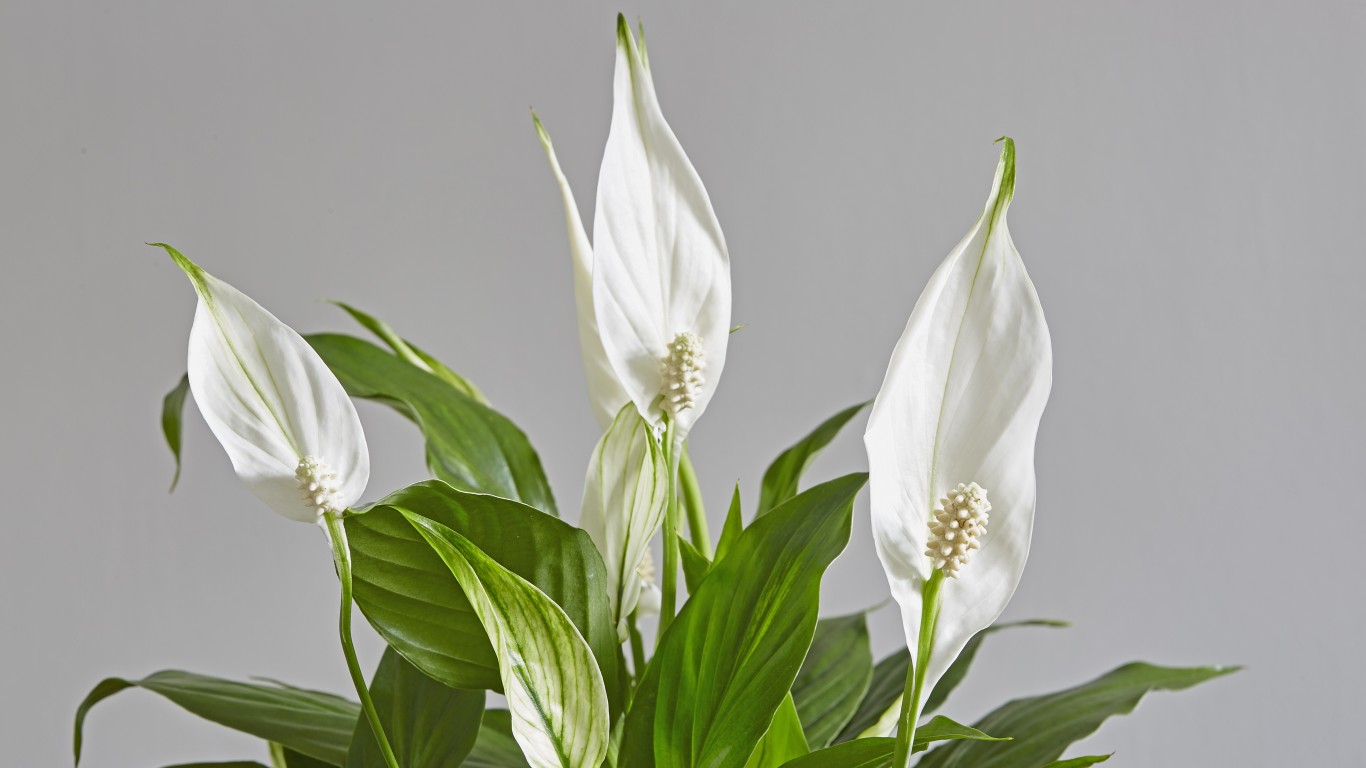
Peace lily
>Latin Name: Spathiphyllum wallisii
>Light Conditions: low to bright indirect light
>Watering Needs: moderate/drought tolerant
Tolerant of low humidity and low light, the peace lily is an exceptionally easy indoor plant to care for. Peace lilies prefer to be underwatered, so rather than watering on a schedule, check on them once a week and only water if the top of the soil feels dry. The leaves will also droop if the plant is getting too dry, but will perk up after a watering. In order to generate blooms, ensure that the plant is in a bright room.
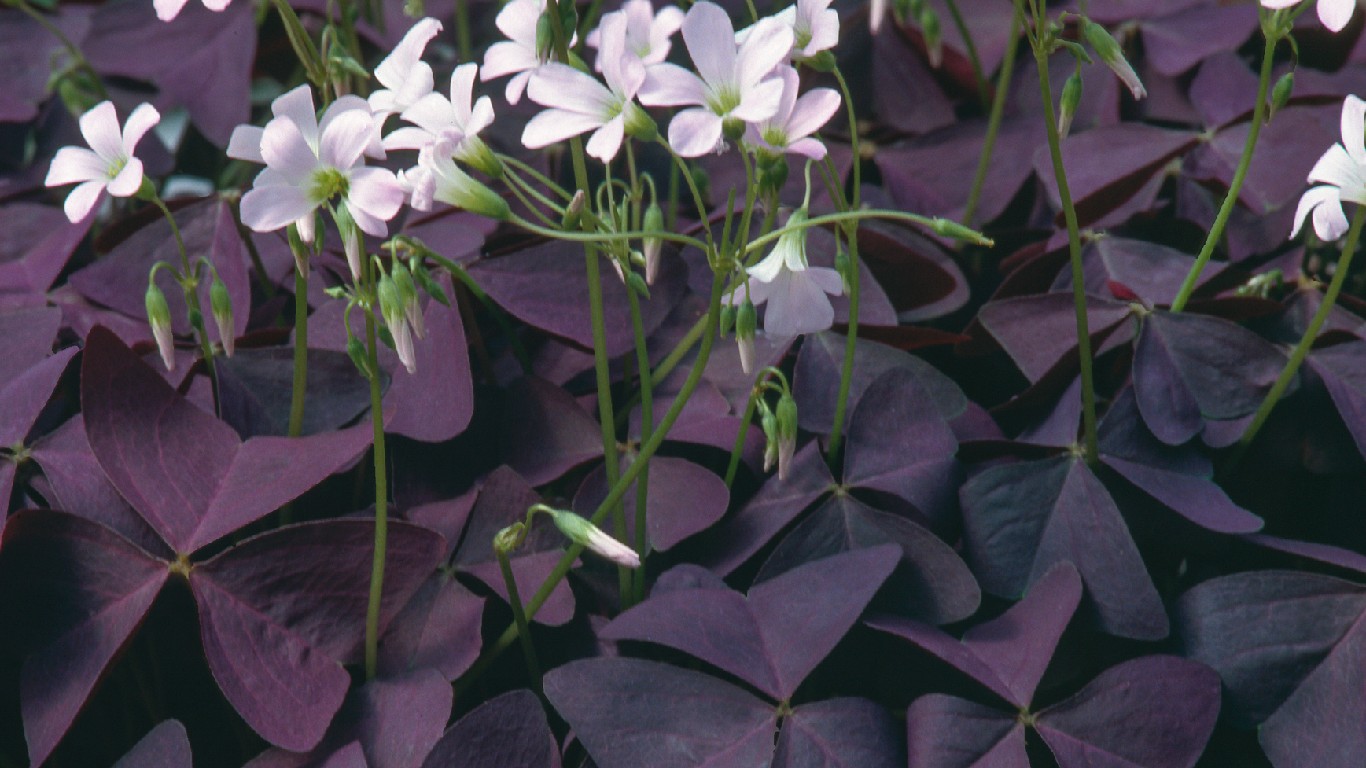
Purple shamrock
>Latin Name: Oxalis triangularis
>Light Conditions: medium to bright light
>Watering Needs: consistent
This dramatic and lively plant features variegated purple leaves on tender stems that grow from bulbs. The three-lobed leaves open wide during the day and close up at night. Although the leaves may wilt and die back if the plant dries out, the bulbs will sprout new leaves to replace them, making oxalis a particularly forgiving plant for inexperienced owners.
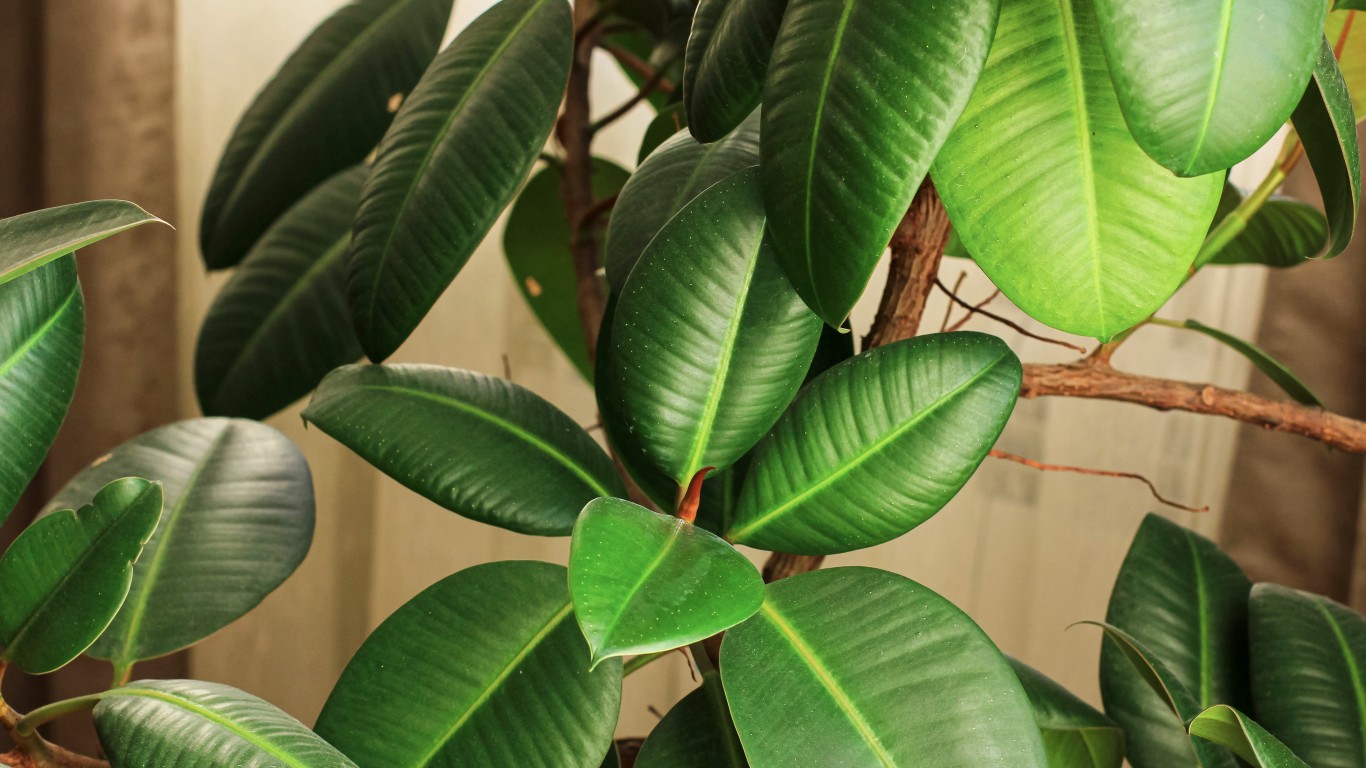
Rubber tree
>Latin Name: Ficus elastica
>Light Conditions: medium to bright light
>Watering Needs: moderate
Rubber trees aren’t fussy but they do need medium or bright indirect light, and may grow spindly and leggy in low light rooms. With large, waxy leaves in deep shades of green and red, these showy plants are hearty growers and can reach the ceiling if not pruned. To keep the leaves glossy, wipe them down with a wet cloth if you notice dust accumulating.
[in-text-ad-2]
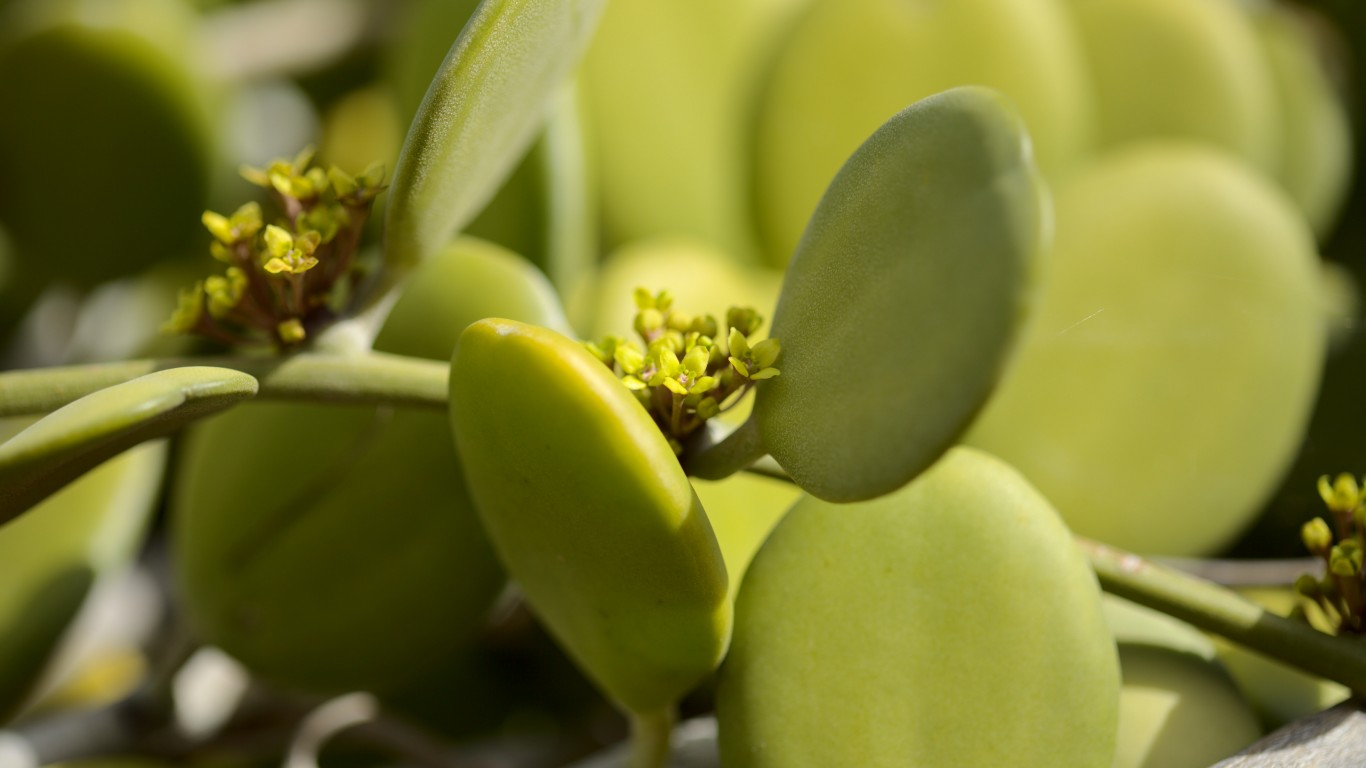
Silver dollar vine
>Latin Name: Xerosicyos danguyi
>Light Conditions: medium to bright light
>Watering Needs: drought tolerant
This climbing succulent shrub is a native desert plant and loves bright, direct light. Placing it on a sunny patio in the summer is a great way to keep it healthy and growing. Giving it a trellis or support to climb on will encourage its upward growth, but it will also grow well in a hanging basket.
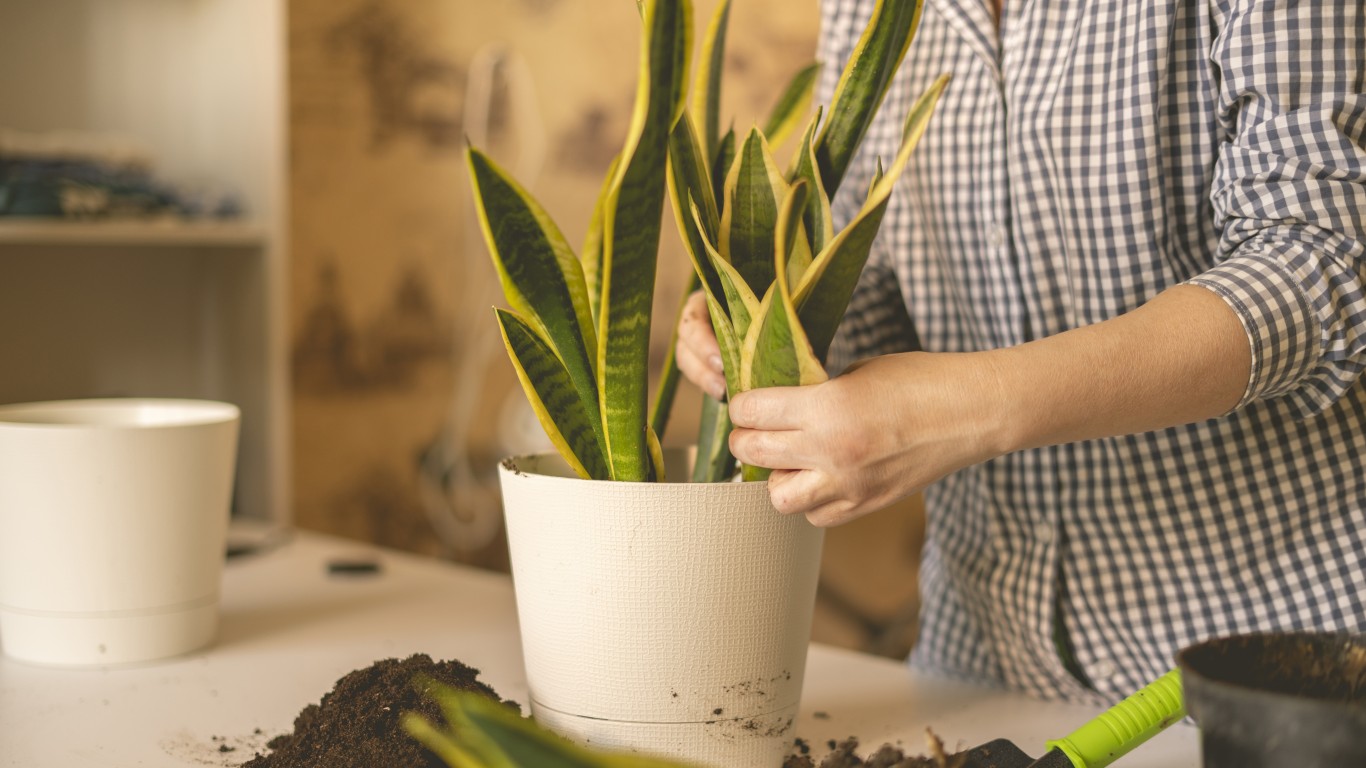
Snake plant
>Latin Name: Dracaena trifasciata
>Light Conditions: any light
>Watering Needs: drought tolerant
One of the most popular plants in homes, offices, and businesses, snake plants are virtually indestructible. They can thrive in bright light as well as in dark corners, and appreciate very scant watering. With upright, lance-shaped leaves in shades of green, yellow, and white, these hardy house plants can grow up to four feet high.
[in-text-ad]
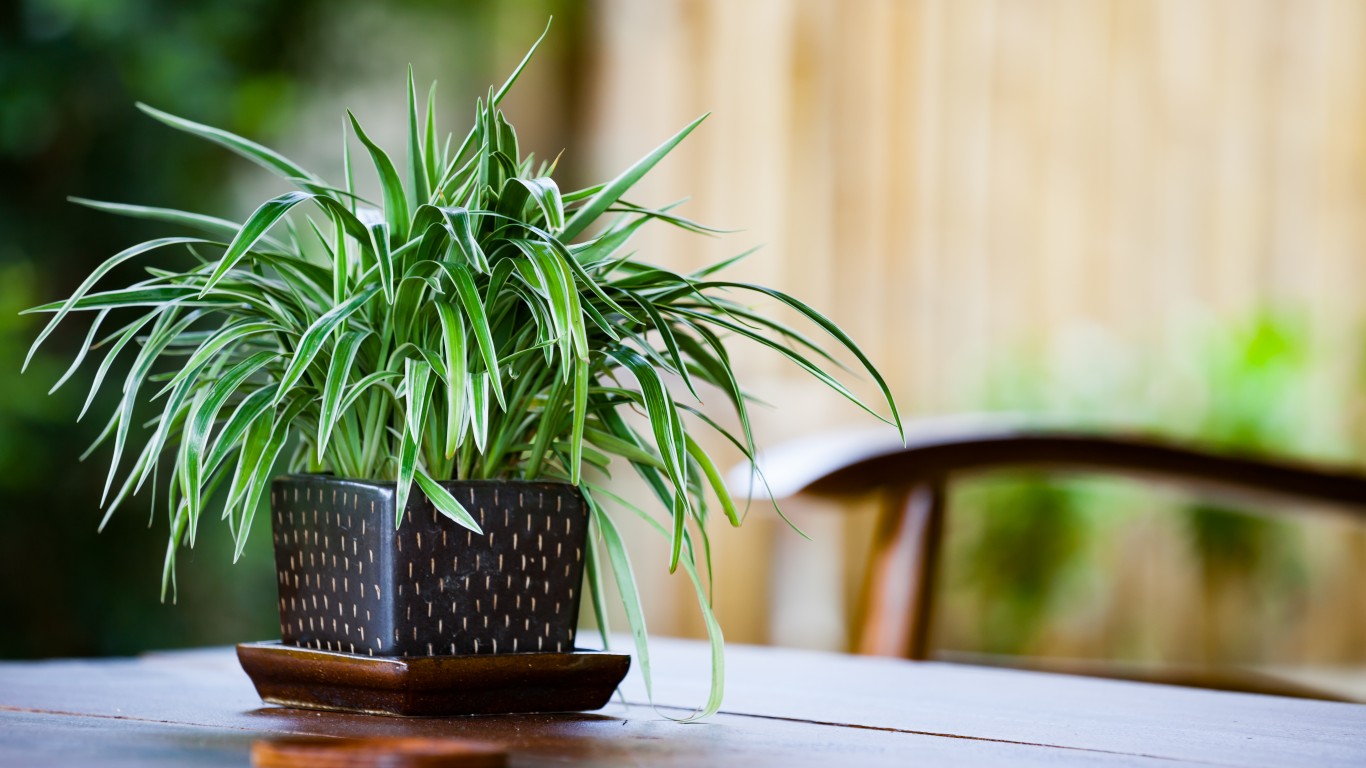
Spider plant
>Latin Name: Chlorophytum comosum
>Light Conditions: low to bright indirect light
>Watering Needs: moderate
These prolific growers are especially suited for hanging baskets, where their “babies” will have space to trail down around the pot. Considered incredibly adaptable, spider plants can live in a wide range of conditions with few problems, and enjoy cooler temperatures. Their offshoots are easy to propagate into new plants.
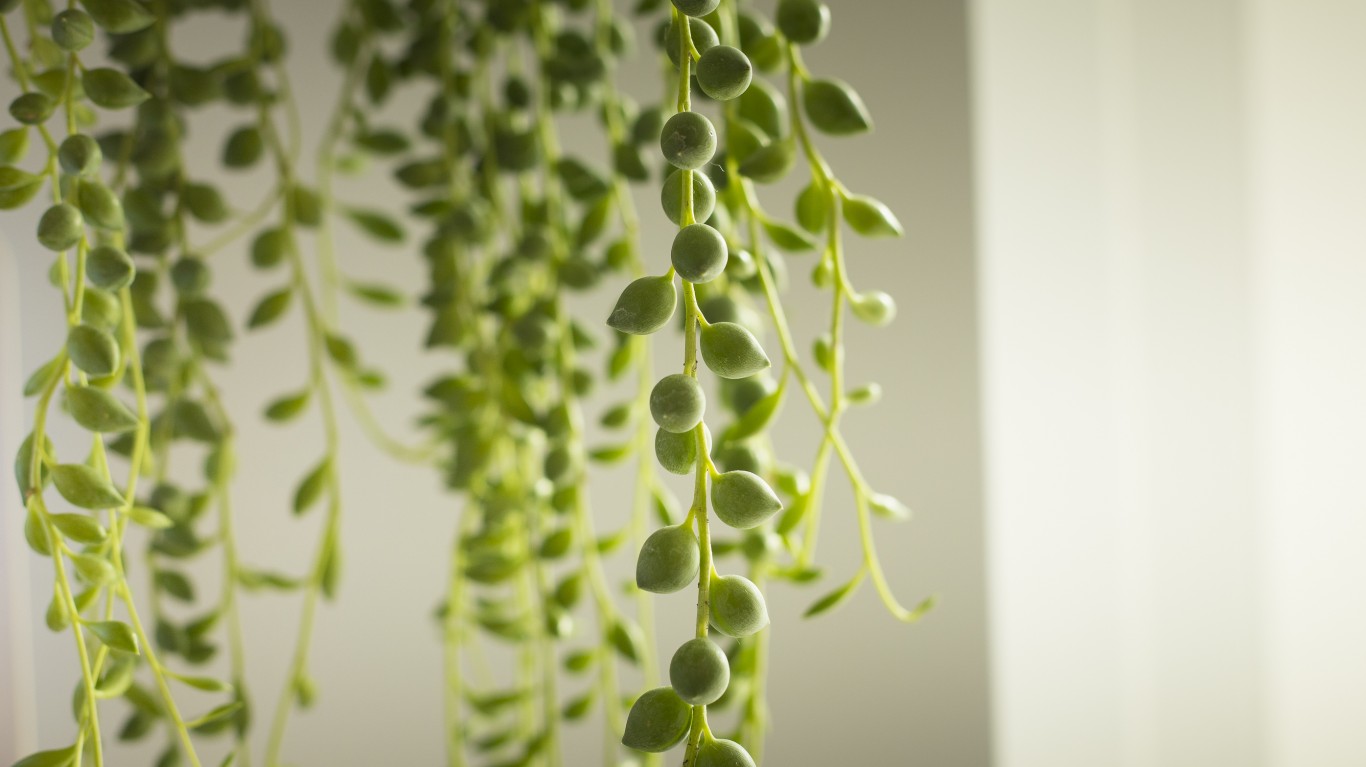
String of pearls
>Latin Name: Senecio rowleyanus
>Light Conditions: medium to bright light
>Watering Needs: drought tolerant
This unusual succulent is a vigorous grower, with long stems that cascade down around the pot. Although it may need pruning once in a while to keep the stems attractive, this drought tolerant beauty rarely needs to be repotted, and even produces clusters of white flowers with colorful stamens.
Swedish ivy
>Latin Name: Plectranthus verticillatus
>Light Conditions: medium light
>Watering Needs: consistent
Despite its name, Swedish ivy is native to southern Africa and is not a true ivy. Its vining branches are well suited for cascading down from hanging baskets, and will need periodic pruning. Although primarily grown for its scalloped foliage, Swedish ivy will bloom once a year with small, attractive clusters of white to mauve blossoms.
[in-text-ad-2]
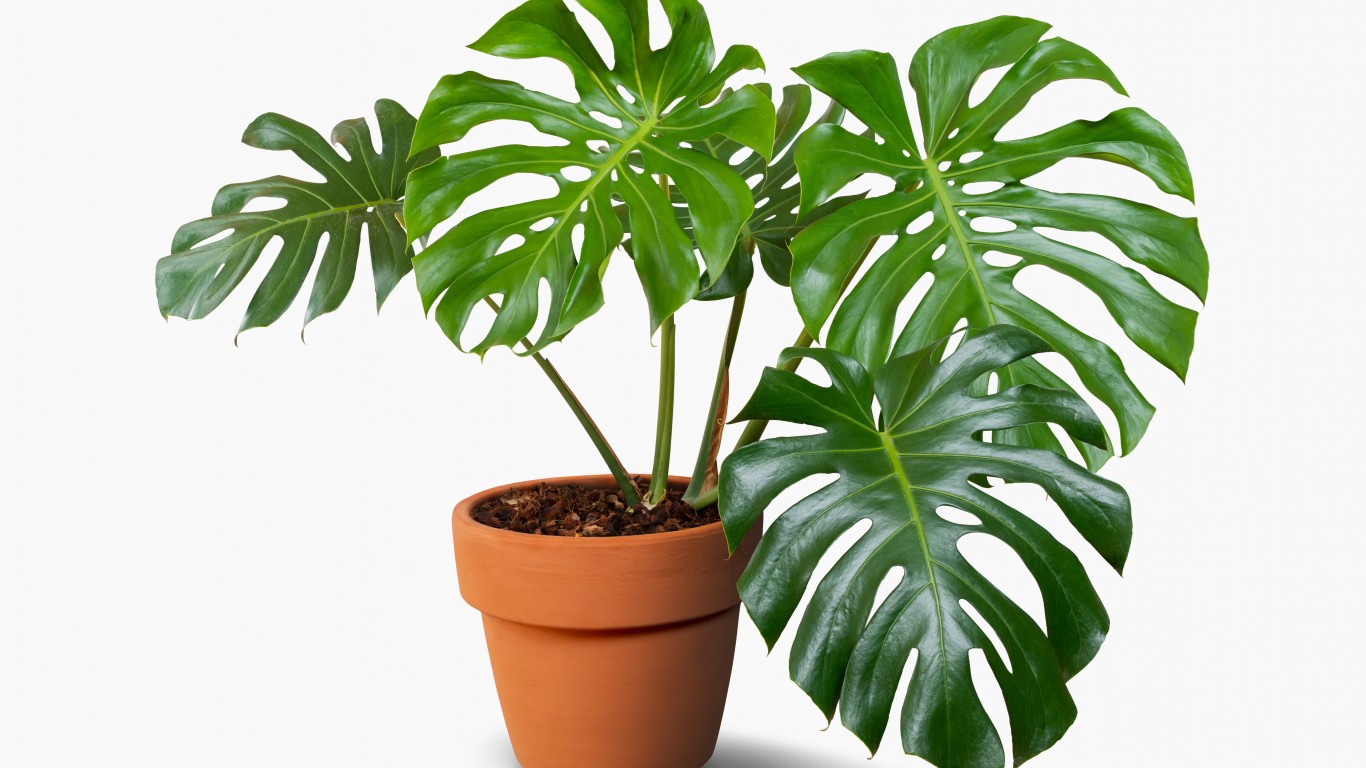
Swiss cheese plant
>Latin Name: Monstera deliciosa
>Light Conditions: medium to bright indirect light
>Watering Needs: moderate
Monsteras are sought after for their large, iconic split leaves. Although these tropical plants prefer bright light and warm, humid conditions, they can tolerate low light situations. They are natural climbers, and will grow upright if given stakes or supports to climb, often developing large aerial roots that act as extra supports.
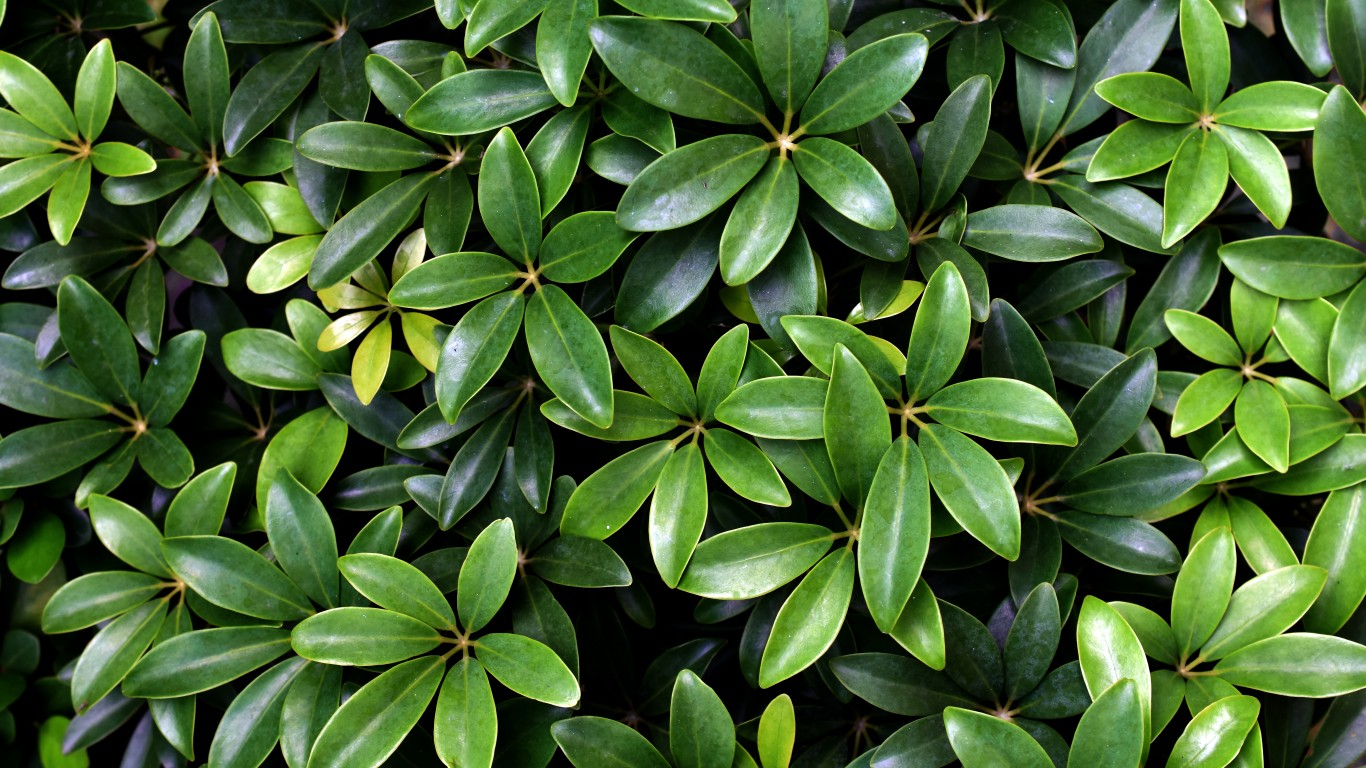
Umbrella tree
>Latin Name: Schefflera actinophylla
>Light Conditions: medium to bright indirect light
>Watering Needs: moderate
Reaching heights of eight to 10 feet indoors, umbrella trees are suitable for large, bright rooms with high ceilings. Their leaves form radial clusters and are usually solid green, although variegated varieties exist. Although they don’t like soggy soil, they do prefer humidity. Place an umbrella tree pot on a tray of rocks with water in it to keep the air around the plant moist.
[in-text-ad]
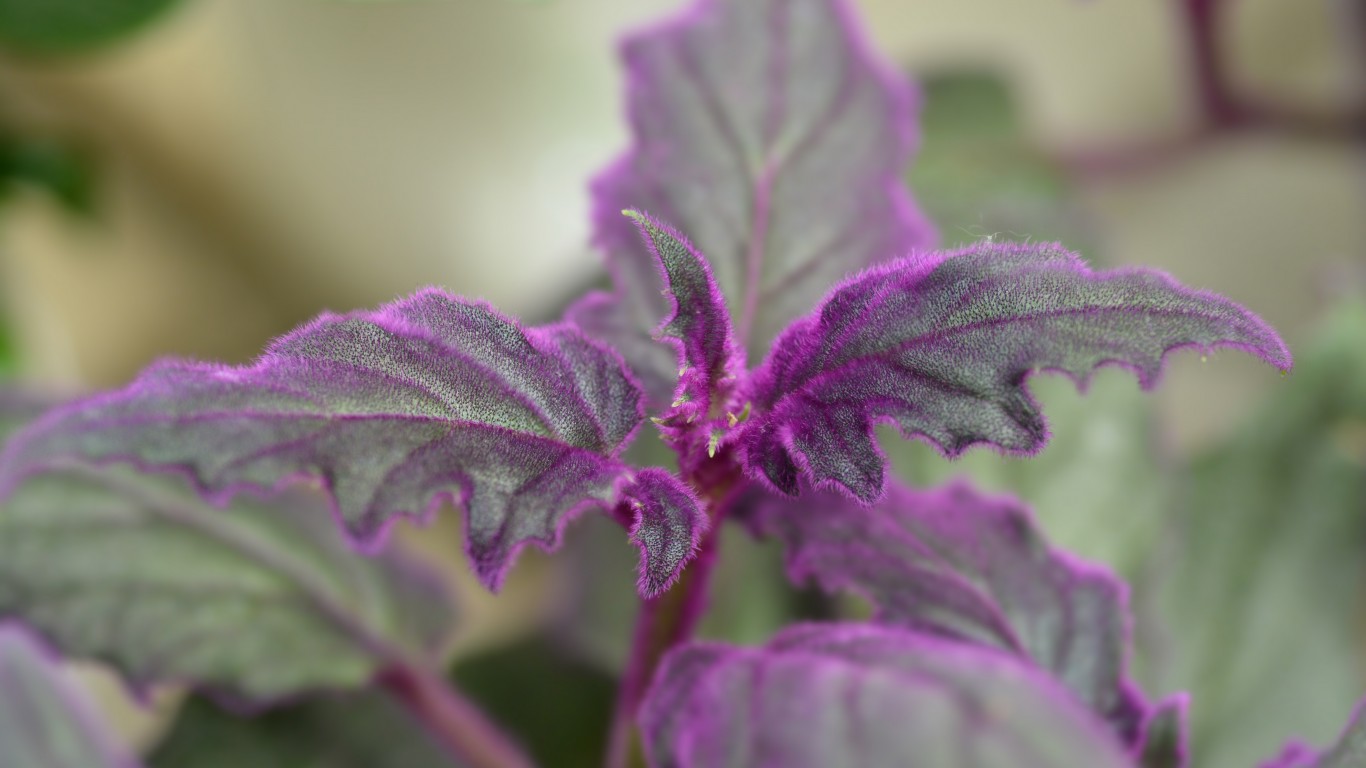
Velvet plant
>Latin Name: Gynura aurantiaca
>Light Conditions: medium to bright indirect light
>Watering Needs: consistent
Also known as the purple passion plant, this unusual house plant has bright purple hairs over its serrated green leaves. Problems with the plant often stem from water issues. To prevent root rot, let about a quarter of the soil dry before rewatering. Avoid getting water on the foliage, as it can become trapped in the hairs and cause the leaves to rot.
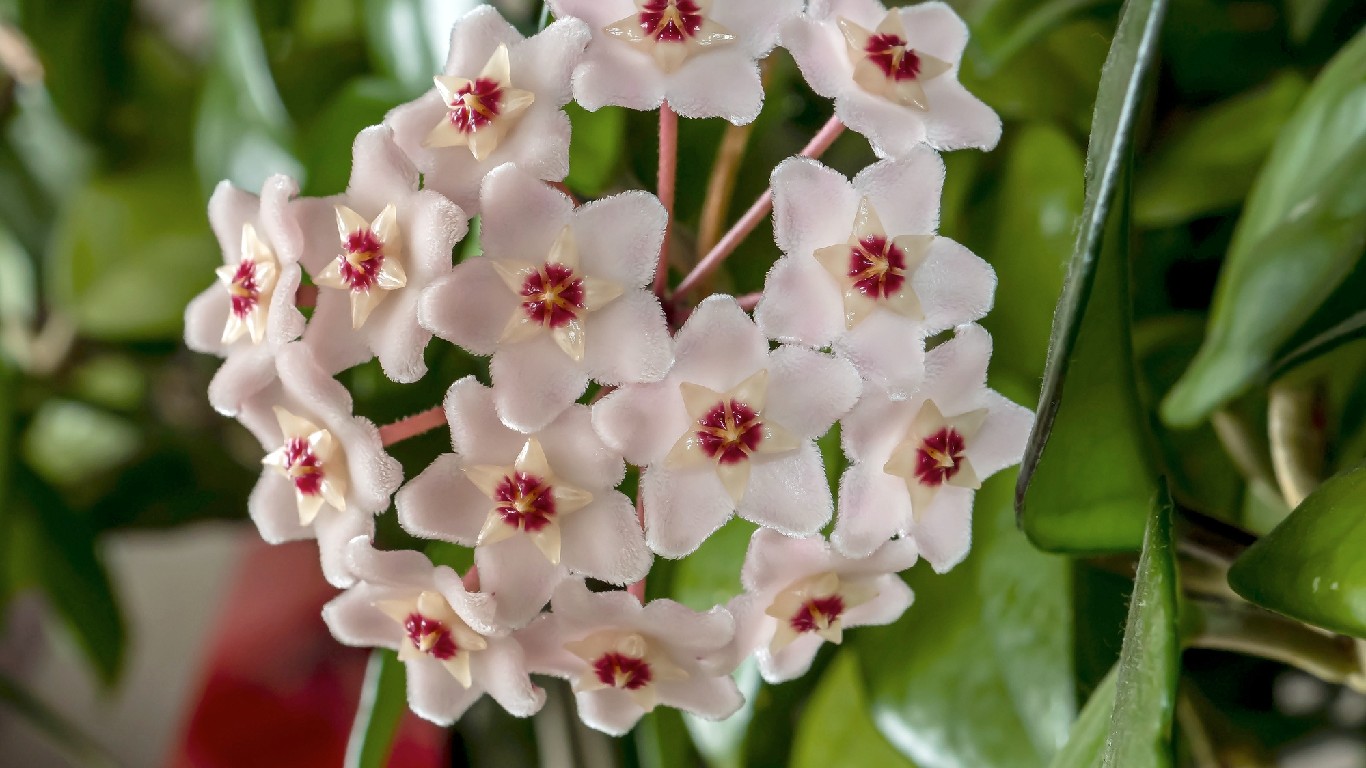
Wax plant
>Latin Name: Hoya carnosa
>Light Conditions: medium to bright light
>Watering Needs: drought tolerant
Also known as hoyas or porcelain flowers, these hardy vines feature thick, shiny foliage and will occasionally produce fragrant blooms. They can live for decades if treated well and will snake around an entire room if given wall supports or trellises. Hoyas prefer drier soil but high humidity and take well to occasional misting.
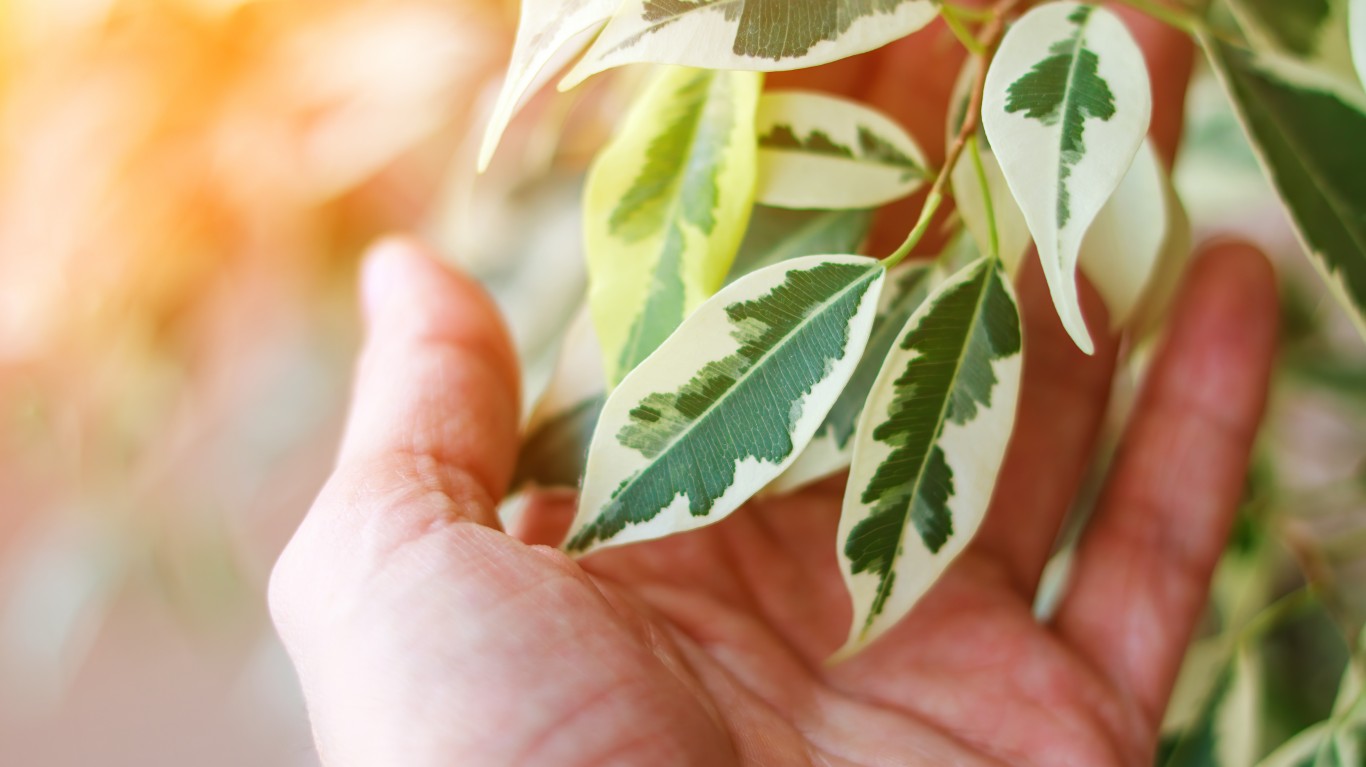
Weeping fig
>Latin Name: Ficus benjamina
>Light Conditions: medium to bright indirect light
>Watering Needs: drought tolerant
Weeping figs are incredibly easy to care for as long as you follow one rule: after you’ve placed your ficus in an ideally bright location, never move it again. Weeping figs are very sensitive to changes in their environment and may drop their leaves if they are moved. These trees will stay green and healthy with occasional waterings and warm rooms that are free of drafts.
[in-text-ad-2]
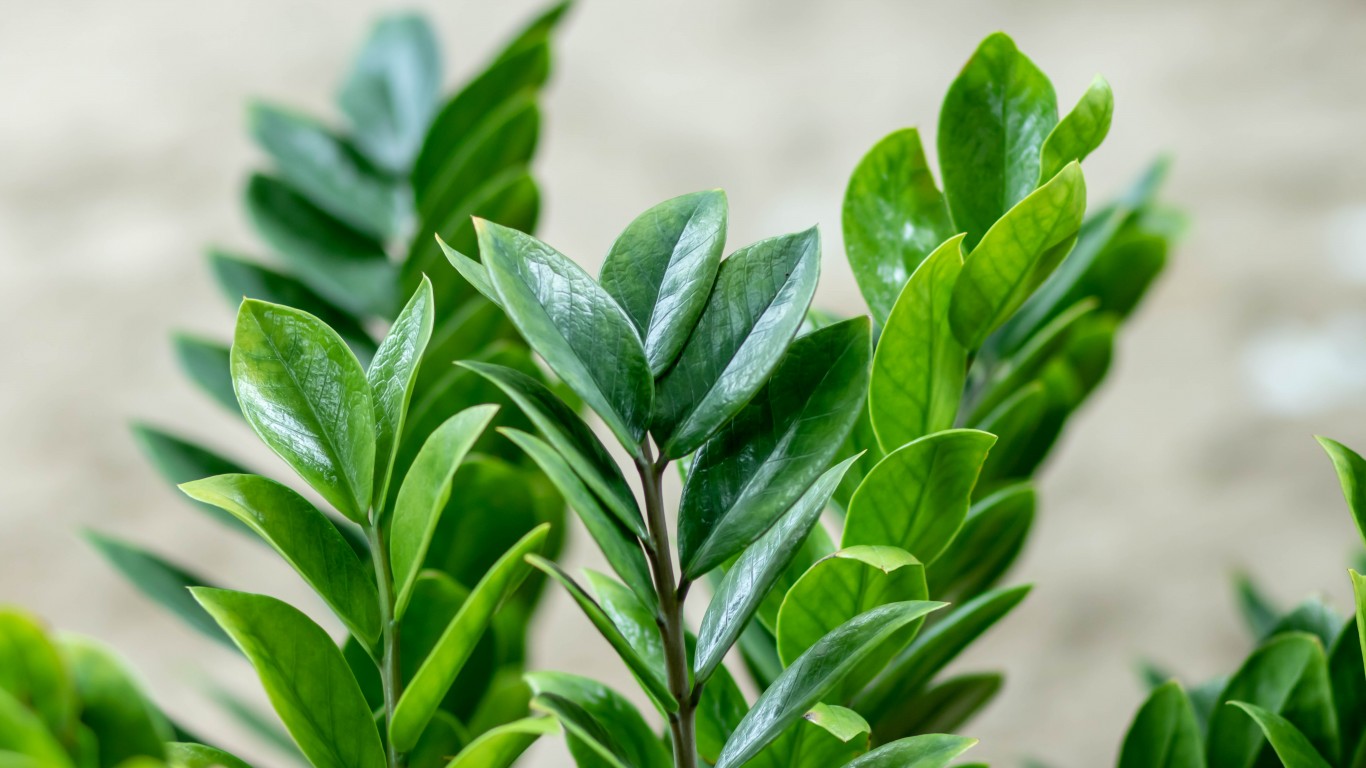
Zanzibar gem
>Latin Name: Zamioculcas zamiifolia
>Light Conditions: any indirect light
>Watering Needs: drought tolerant
Thriving in most light settings except for direct sunlight, Zanzibar gems, or z-z plants, are a forgetful gardener’s dream. They are incredibly low maintenance and drought tolerant, only needing water if their soil has completely dried out – possibly as infrequently as once a month. Occasional dusting with a wet rag will keep their waxy leaves shiny.
100 Million Americans Are Missing This Crucial Retirement Tool
The thought of burdening your family with a financial disaster is most Americans’ nightmare. However, recent studies show that over 100 million Americans still don’t have proper life insurance in the event they pass away.
Life insurance can bring peace of mind – ensuring your loved ones are safeguarded against unforeseen expenses and debts. With premiums often lower than expected and a variety of plans tailored to different life stages and health conditions, securing a policy is more accessible than ever.
A quick, no-obligation quote can provide valuable insight into what’s available and what might best suit your family’s needs. Life insurance is a simple step you can take today to help secure peace of mind for your loved ones tomorrow.
Click here to learn how to get a quote in just a few minutes.
Thank you for reading! Have some feedback for us?
Contact the 24/7 Wall St. editorial team.
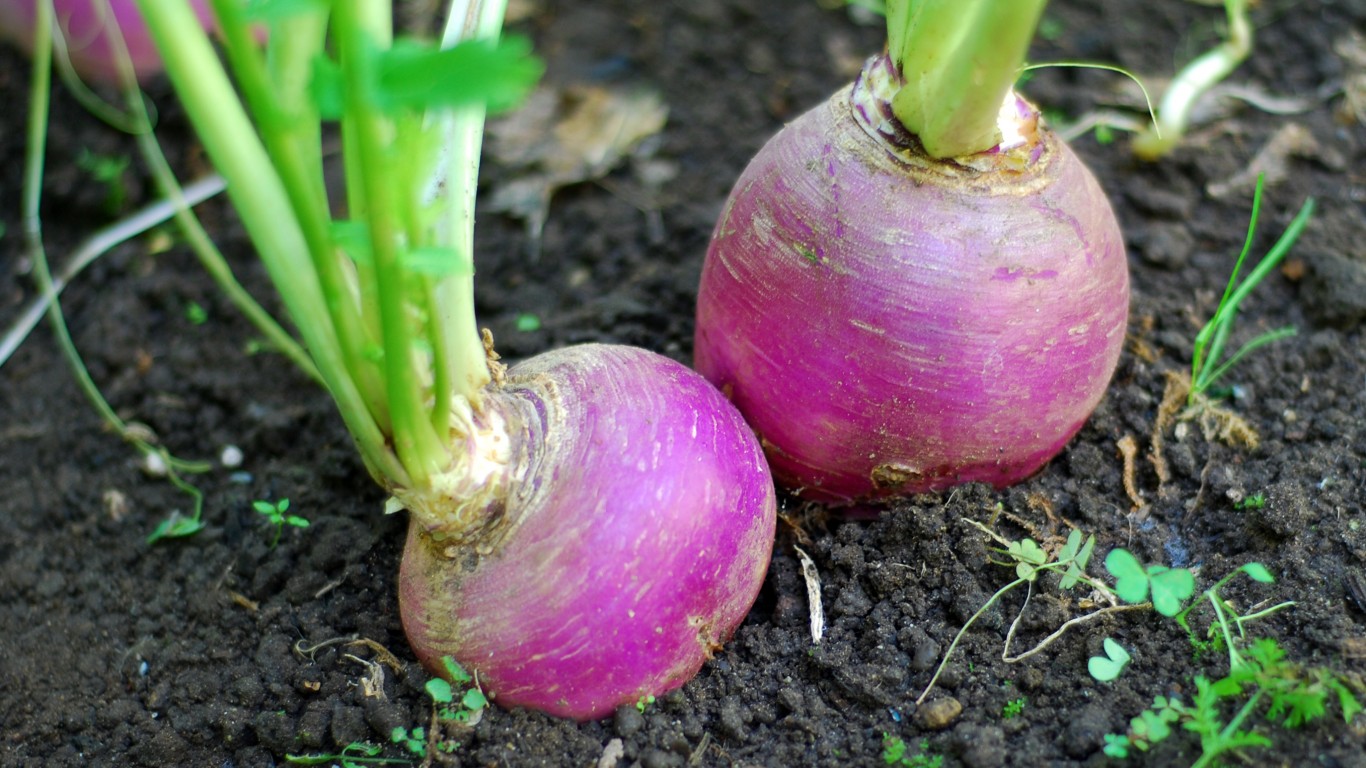 24/7 Wall St.
24/7 Wall St.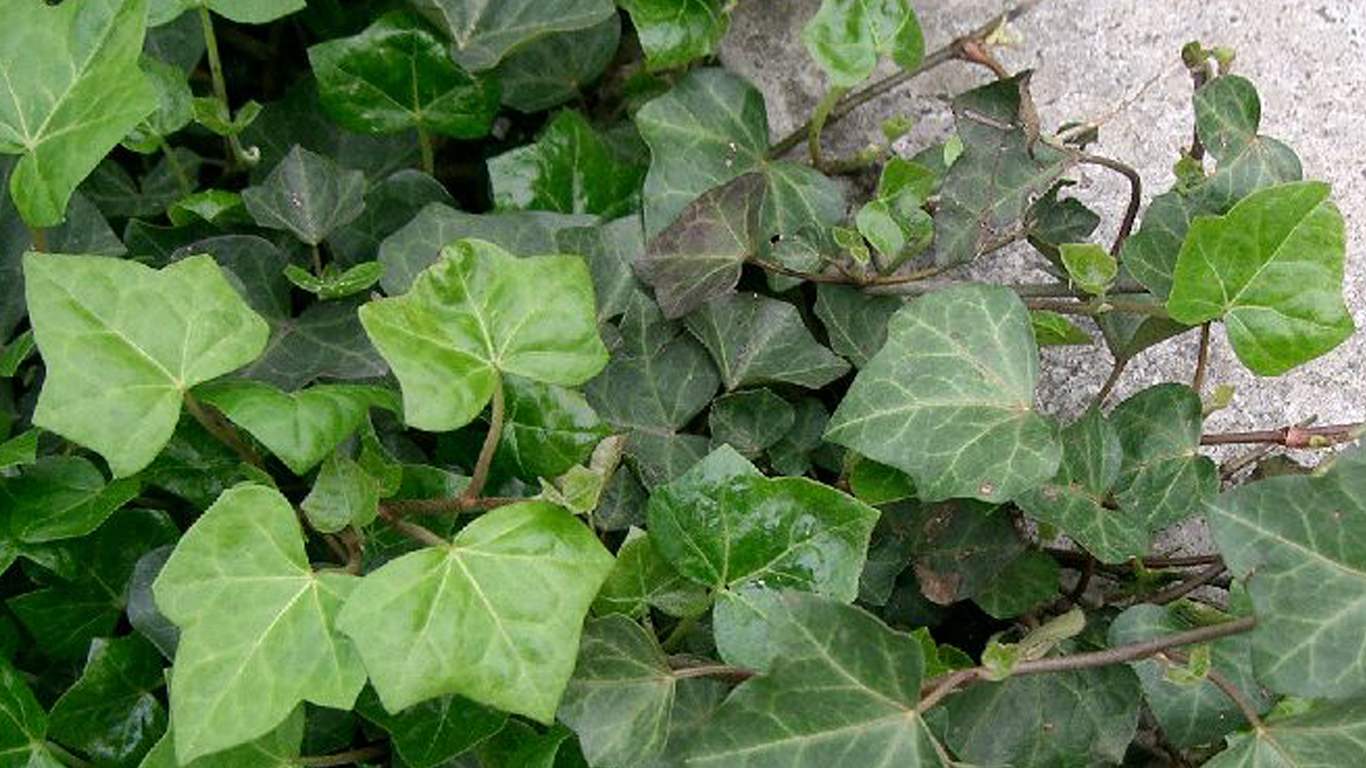
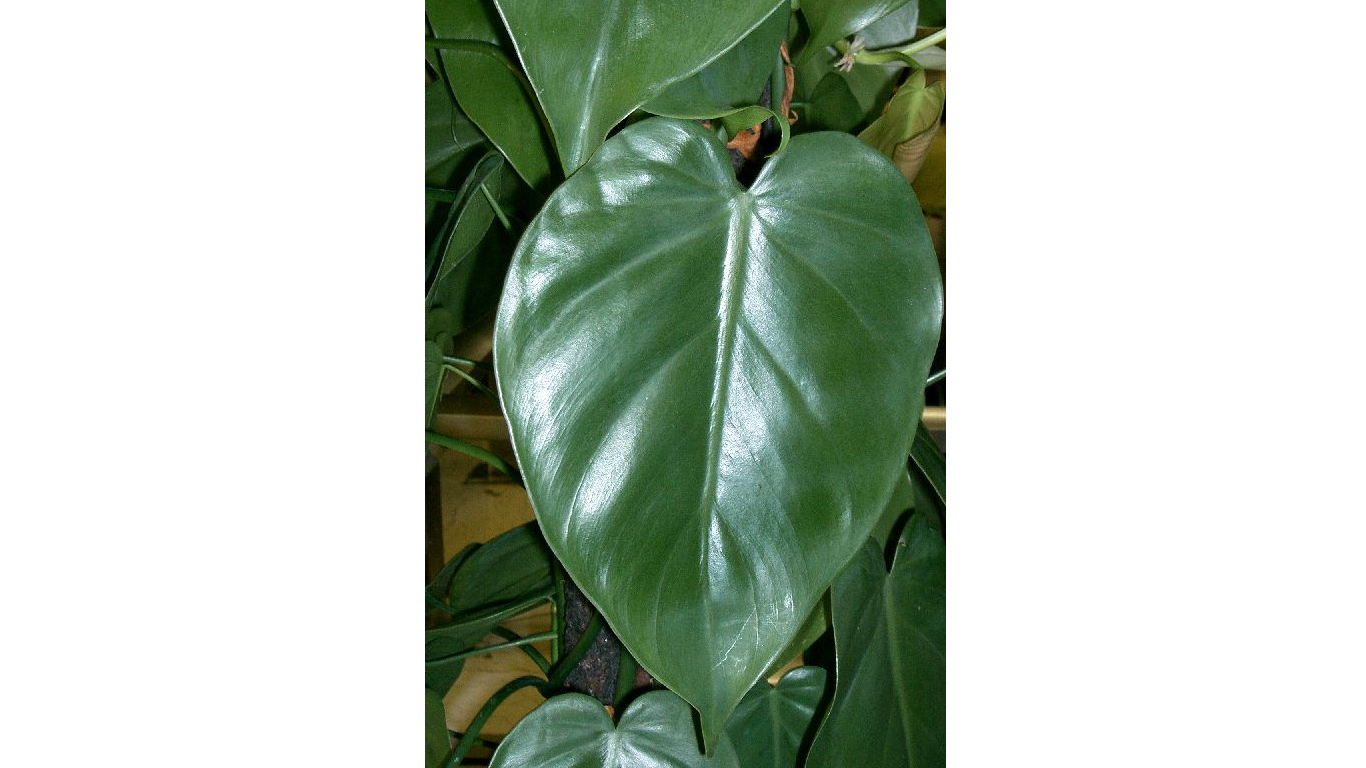
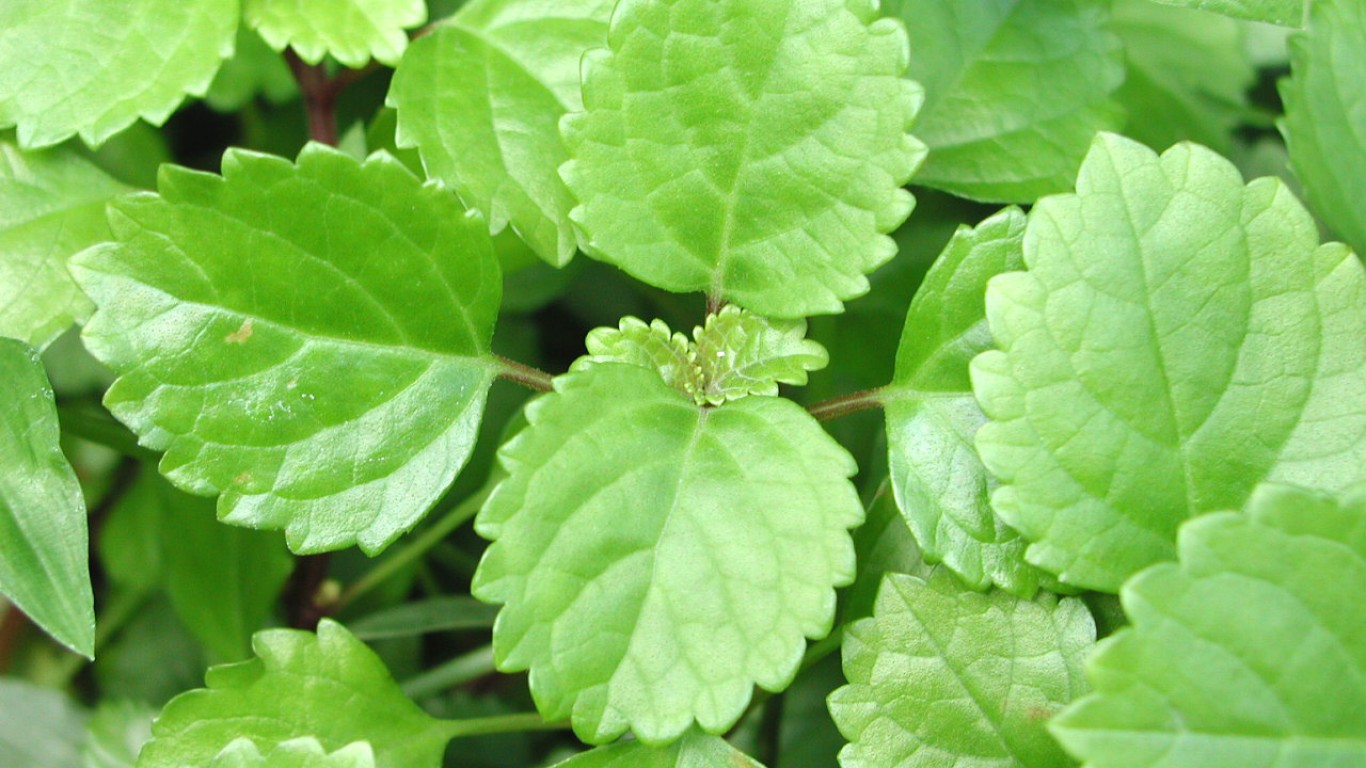
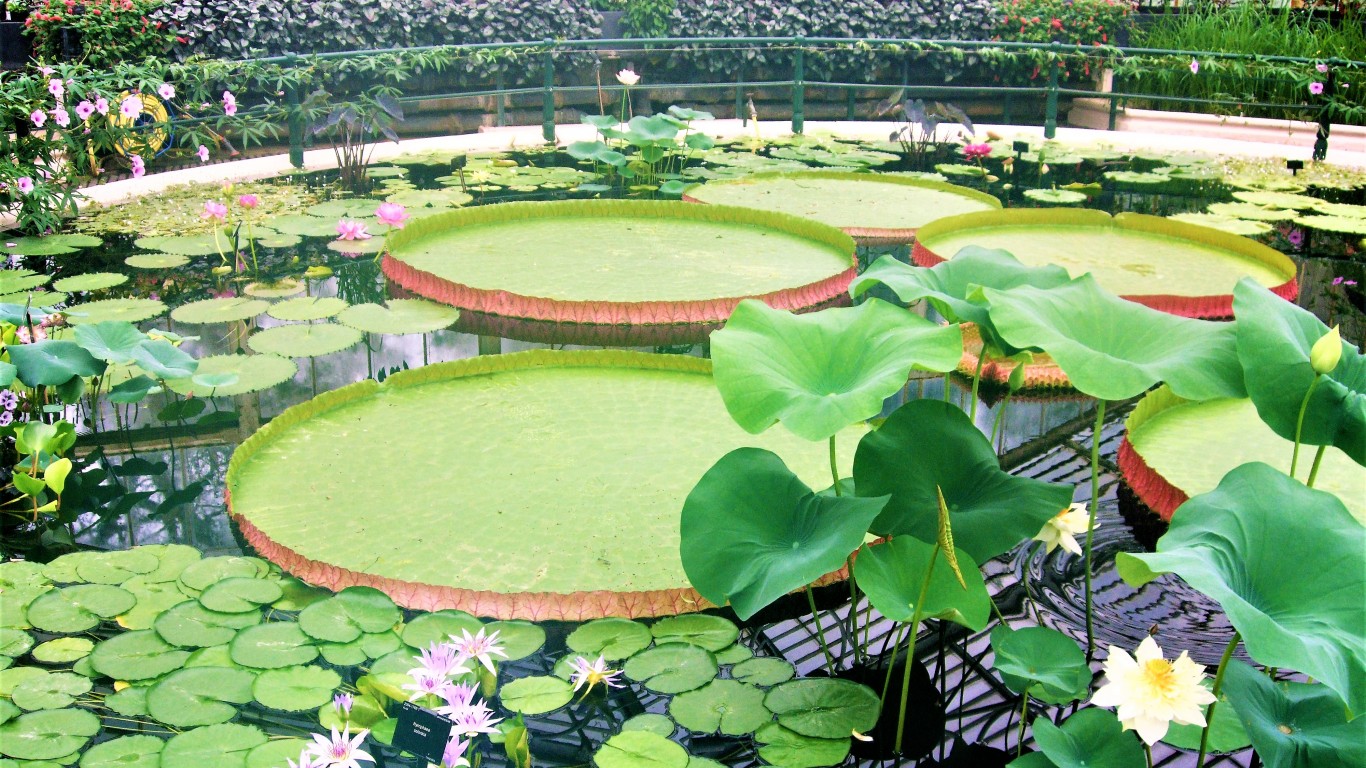 24/7 Wall St.
24/7 Wall St.